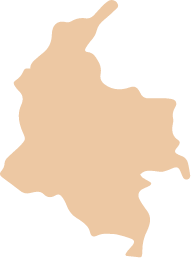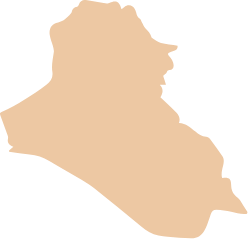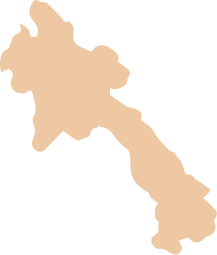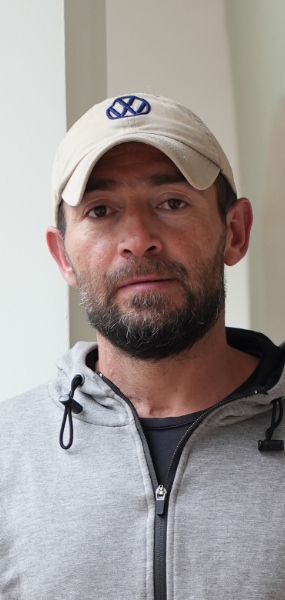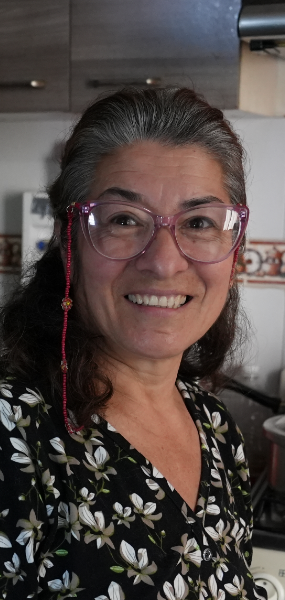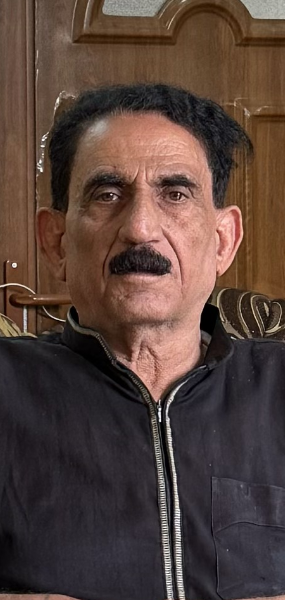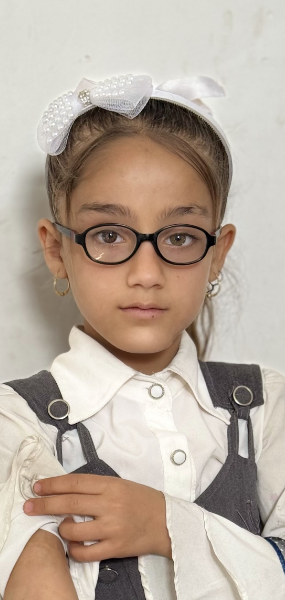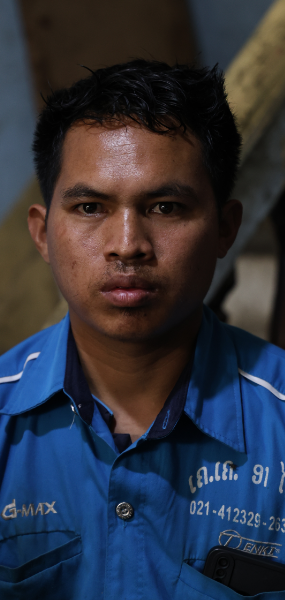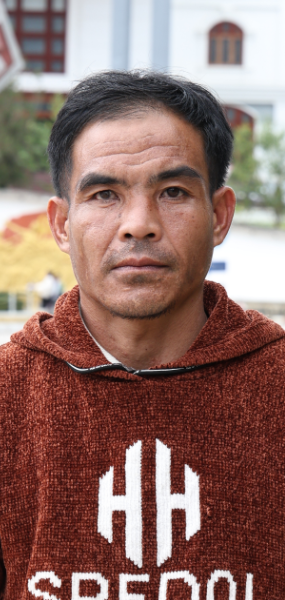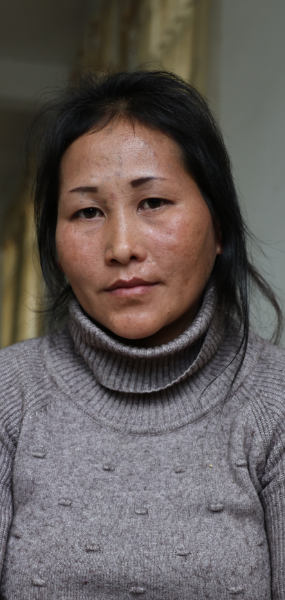REHABILITATION MATTERS
THE APPEAL MADE BY PEOPLE IN CONFLICT-AFFECTED AREAS
#RehabMatters #ReadCompte
Globally, one in three people are living with health conditions that might benefit from rehabilitation.
While rehabilitation and assistive technology needs are enormous, they remain largely unmet, especially in low- and middle-income countries, and conflict-affected areas. Over 50% of people who need rehabilitation services cannot access them.
The availability, affordability, accessibility and quality of rehabilitation services and assistive technology are further jeopardised in conflict-affected areas. However, we know that conflicts cause surges in injuries or critical illness, thus increasing rehabilitation needs.
The key obstacles facing people who seek rehabilitation and assistive technology, during and after conflicts, include the increased vulnerability of already fragile health systems, disrupted services, damaged infrastructure, shortage of health and rehabilitation professionals and equipment, and widespread unsafety. Other obstacles may include displacement, situations of exclusion and abuse, loss of income, lack of accessible information on available services, and distance from rehabilitation services.
The use of explosive weapons and the subsequent, long-term contamination by explosive ordnance cause reverberating effects, with an impact not only on individuals, but also on their families, communities, and society as a whole.
In 2023, at least 5,757 casualties of mines and explosive remnants of war were recorded, resulting in 3,663 people being injured. Civilians made up 84% of all recorded casualties, and children accounted for at least half of them. The same year, explosive weapons were responsible for 47,476 casualties, of whom 23,980 were injured with a potential need for long-term assistance. Some 73% of these casualties were civilians, marking the highest levels of civilian harm recorded since 2010. This percentage rises to 90% when these weapons are used in populated areas. For the people who survive, rehabilitation and assistive technology have been proven to reduce health complications, foster their autonomy, participation in life, and economic productivity.
Rehabilitation is a critical component of ‘victim assistance’, together with data collection, laws and policies, emergency and ongoing medical care, psychosocial and psychological support, and socio-economic inclusion.
The existing policy frameworks for victim assistance should guide consistent and robust efforts and define accountability. However, these commitments have yet to be fully translated into action. Too many people are bearing the physical, social and mental consequences of conflicts; too many of them are struggling to access the services they need, including rehabilitation, to achieve their potential and participate fully in life and society.
FOCUS COUNTRY
“Rehabilitation Matters” looks more closely at access to rehabilitation and assistive technology in conflict-affected areas in Colombia, Iraq, Lao PDR, Afghanistan and Yemen.
Click on each country to find out more.
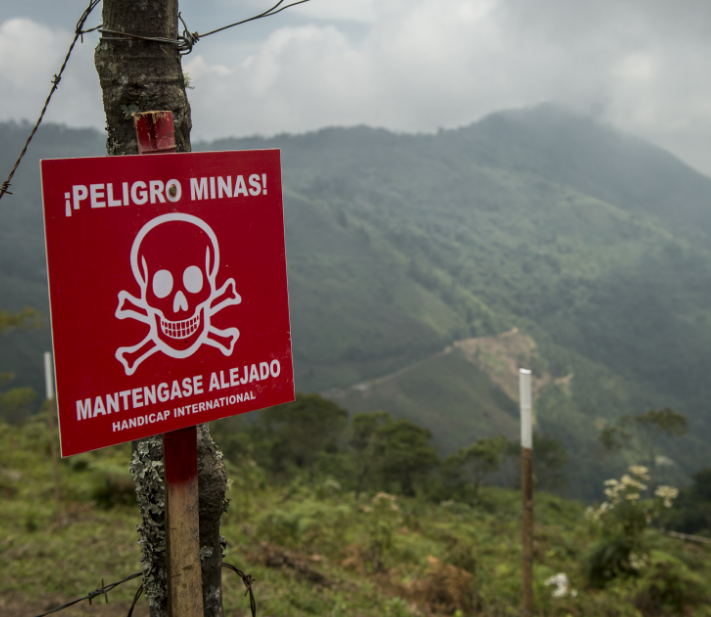



COLOMBIA
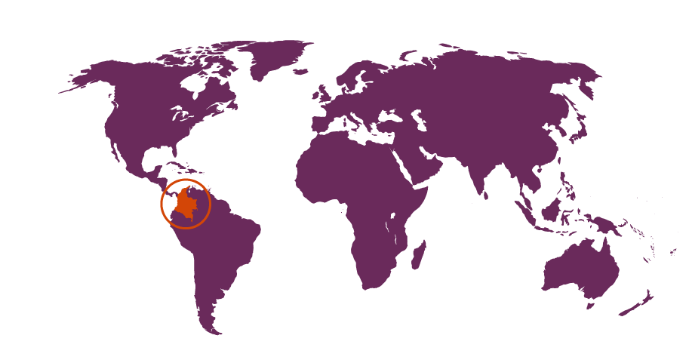



• For decades, Colombia has been affected by a protracted conflict between the national government, the Revolutionary Armed Forces of Colombia (FARC) and National Liberation Army (ELN) insurgent groups, and several criminal organisations.
• Several other armed groups remain active across the country, causing the security conditions in the country´s most remote areas to deteriorate. Non-state armed groups were still using antipersonnel mines in the country in 2022.
• Despite significant progress made in reforming various laws and policies, there are still many gaps in terms of accessing health insurance, healthcare, physical rehabilitation services and humanitarian assistance, and the government compensation scheme remains inaccessible for many people due to long waiting periods and the complex formalities involved.
• The cut in funding to victim assistance activities from international cooperation exacerbates the situation of people suffering the consequences of the conflict.
• The percentage of the population with disabilities varies across the surveys and census. According to the Quality of Life Surveys conducted in 2018 and 2019, 7.7% of the Colombian population had disabilities.
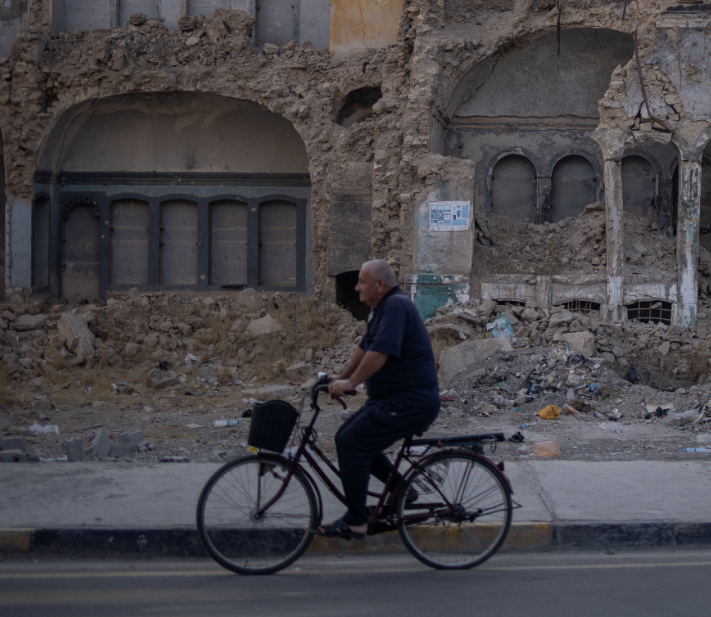



• Iraq is among the countries reporting extremely widespread antipersonnel landmine contamination (over 100km²). The type of contamination is highly diverse, including legacy landmines from the Iran-Iraq conflict during the 1980’s, the First and Second Gulf Wars in 1991 and 2003, and contamination stemming from the 2014-2017 conflict between the Islamic State of Iraq and Syria (ISIS) and pro-government forces.
• This last type of contamination includes improvised explosive devices left behind in the ISIS- controlled area, and unexploded grenades, rockets and mortar rounds near frontline.
• Areas retaken from ISIS occupation have become uninhabitable and inaccessible because of such threats. Explosive hazard contamination poses a significant obstacle for the return of internally displaced persons and humanitarian response efforts.
• It is estimated that approximately 12% of Iraq's population experience some form of disability. This figure rises to 18% among children.
• Those injured in the recent conflict have limited access to primary and specialised health services, including rehabilitation, and wait a long time to receive the assistive technology they need. People with chronic illnesses face high out-of-pocket expenses for healthcare.
IRAQ
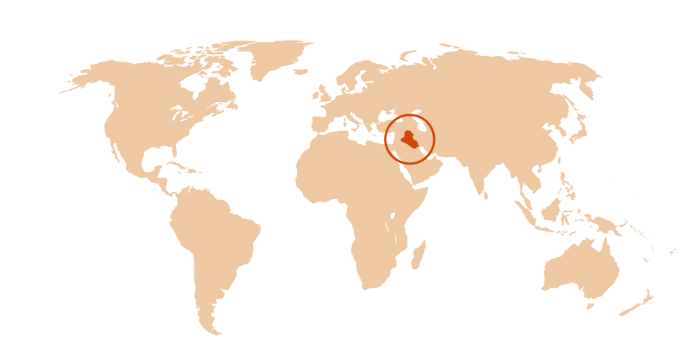







LAO PDR
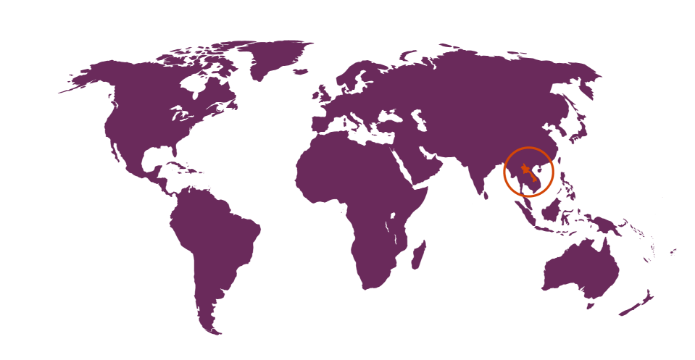



• Lao PDR has the world’s highest level of contamination by unexploded submunitions because the US military dropped more than 2 million tonnes of bombs and over 270 million submunitions between 1964 and 1973. It is estimated that there are approximately 80 million unexploded cluster munitions buried in the Laotian landscape.
• These devices have claimed the lives or injured over 50,000 people since the war began in 1964.
• The number of people needing rehabilitation is largely due to non-communicable diseases, road traffic accidents, ageing, as well as injuries from unexploded ordnance.
• Rehabilitation is mainly provided through public hospital-based services and rehabilitation centres with a workforce of mostly physical therapists. International and non-governmental organizations provide significant support with workforce development, provision of assistive technology, and policy dialogue.
• According to the Lao PDR Population and Housing Consensus Report of 2016, approximately 2.8% of the population over the age of five years has a disability, while WHO estimates disability prevalence in Lao at 23% of the population (WHO, 2019). This is likely to be an underestimation, as the worldwide prevalence of disability is 16%.




• Afghanistan continues to face a complex and protracted humanitarian crisis, driven by the convergence of decades of conflict, recurring natural disasters, and deepening economic challenges. More than 40 years of war, coupled with ongoing political and economic instability, have severely eroded resilience and exacerbated chronic vulnerabilities. Natural disasters—including earthquakes, floods, and droughts—further compound these challenges, placing additional strain on already fragile systems.
• Afghanistan remains one of the most landmine contaminated countries in the world - surpassed only by Ukraine. According to The HALO Trust, explosives contamination impacts approximately 20% of the population, including hundreds of thousands of Afghan refugees forcibly returned from Pakistan and Iran in 2025.
• While the overall intensity of active conflict has declined, other significant drivers of displacement persist. These include the impact of natural disasters, limited access to basic services, and widespread economic insecurity.
• Under the current regime, women and girls are excluded from accessing services and participating in society. Systemic barriers prevent them from moving around freely and exercising their autonomy, even more so when they have disabilities.
AFGHANISTAN








YEMEN




• Millions of people in Yemen face worsening conditions as conflict, economic decline and climate shocks worsen food insecurity and disrupt livelihoods. Vulnerable groups - including women, children, persons with disabilities, the Muhamasheen, migrants, and internally displaced people - are at heightened risk. In 2025, 19.5 million people need humanitarian aid and protection, 1.3 million more than in 2024. (UNOCHA, 2025)
• Areas near borders and former frontlines are among the most contaminated with landmines and explosive ordnances. Massive historic contamination remains from conflicts dating back to 1962–1969, 1970–1983 and the 1990s. (HI, 2020) While civilian casualties from frontline hostilities remained lower in 2024 compared with previous years, a significant share (289) resulted from renewed airstrikes, while explosive remnants of war (ERW) continue to endanger civilians in both active and dormant frontline areas. Over one-third of the ERW casualties in Yemen in 2024 were children. (Civilian Impact Monitoring Project, 2024)
• There have been widespread attacks on health facilities and civilian infrastructure (such as roads and ports) throughout the conflict. In 2025, 40% of Yemen's health facilities are only partially functioning or no longer operational. (UNOCHA, 2025) In addition, rehabilitation services in Yemen are limited to urban centres, leaving rural and conflict-affected areas without care, while insecurity, roadblocks, low awareness, and gender restrictions further hinder access.
ANDRES, GLORIA, HMOUD, SHAHA, DEE, NGOK, XOUA, MARZILA, NAVIDULLAH, KHALED AND AHMED
are women and men, of different ages, and with different profiles: victims of explosive weapons or ordnance, internally displaced persons, persons with disabilities, and caregivers.
They are sharing their lived experiences about accessing rehabilitation and assistive technology in Colombia, Iraq, Lao PDR, Afghanistan and Yemen.
Click on their pictures to find out more.
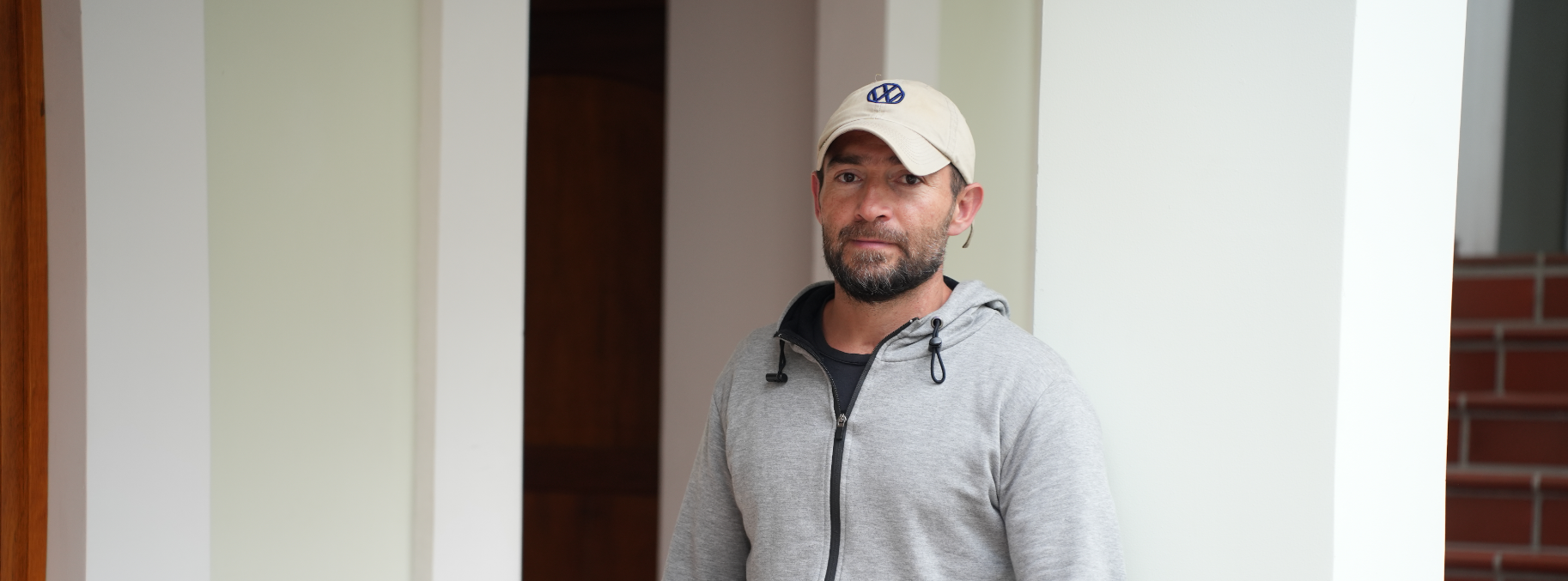



ANDRÉS’ STORY - “MOVING ON”
Andrés was travelling by motorbike between Guayacana and Llorente (in the Nariño department), when a cylinder bomb exploded close to his motorbike.
Andrés was 23 at the time of the accident, and he is 41 today. He was seriously injured and underwent multiple surgeries: two amputations on his right leg, thoracic surgery, tracheostomy, and arm and eardrum reconstruction.
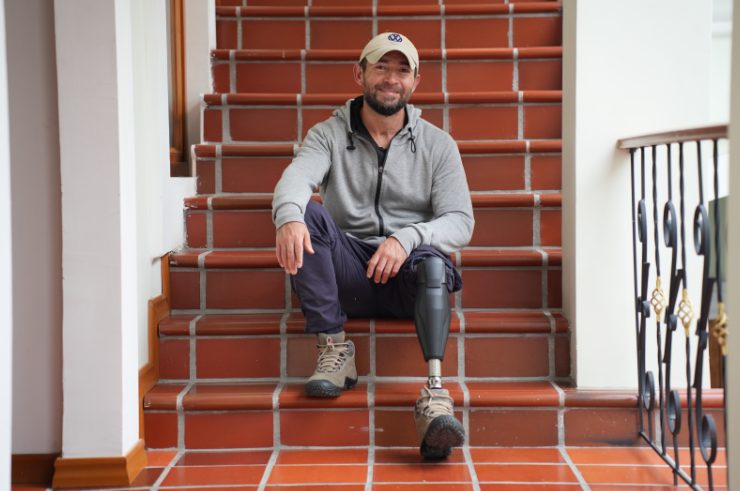



145 casualties from mines and explosive remnants of war were reported in Colombia in 2022. Colombia is among the five countries where new use of antipersonnel mines by non-state armed groups has been reported in 2022. Indeed, the number of incidents of mines attributed to non-state armed groups has increased by 30% since 2021. (Landmine Monitor 2023)
Andrés attended hospital physiotherapy and speech therapy sessions, and he started the process of being fitted for his first prosthesis. The second amputation hit him very hard psychologically, and he felt angry, sad, and disillusioned. However, he did not receive psychological counselling at that time.
Victim assistance (VA) has always been among the less well-funded pillars of Humanitarian Mine Action (5% of the total global mine action budget in 2021 and 2022). In 2021, dedicated international financial support from the global mine action budget for VA reached its lowest level recorded since 2016, despite the growing needs. (Landmines Monitors 2022 and 2023).
Once discharged from hospital, Andrés moved to Pasto, the capital city of Nariño Department, where he could have better access to services and start a new life. With continuous occupational therapy and physiotherapy interventions, Andrés became more hopeful, but still uncertain about what he would do from then on. Andrés was able to rely on the psychosocial, livelihood, and legal support provided by the “Pastoral Social”, a diocesan organisation in Pasto, and Humanity & Inclusion.
“Recovery was a bitter process, because the system is precarious and there is little state support and aid for the victims.”
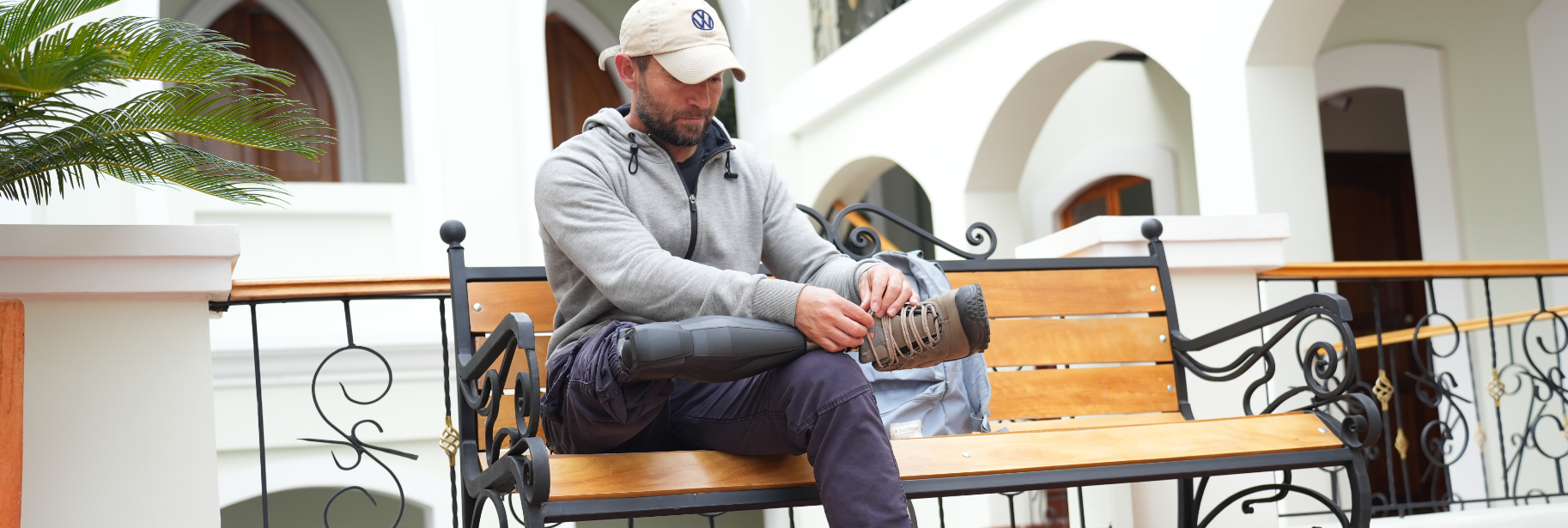



While overcoming the physical and emotional pain, Andrés did everything he could to find the best prosthesis that would meet his needs and match his preferences. This did not prove to be an easy journey, in a system that still considers good-quality and high-tech assistive technology (like prostheses) to be luxury products. His first basic prosthesis, provided by the public system. did not enable him to have full mobility and independence, for example, he could not walk on bumpy paths or climb stairs, and he felt quite uncomfortable and sore. He knew that this prosthesis was not right for him, so he started looking for a better prosthesis that would meet his needs. Once Andrés had a clear idea of what he needed, he went to a traumatologist to obtain a prescription. Andrés found several administrative hurdles in his way, with a lot of back-and-forth from one medical service to the other. In addition, the medical professionals often questioned his request for a better prosthesis, which was seen as something “nice to have”, not as a necessity.
Andrés finally got a high-tech prosthesis six years after the accident. Thanks to his determination, he managed to get his new prosthesis fully funded by a public welfare scheme. Since then, Andrés has changed his prosthesis twice to ensure that it is adapted to him and properly maintained.
Receiving and adapting the prosthesis requires multiple trips to the capital city, Bogotá, and staying there over long periods. The cost of travel and staying in the capital was a significant out-of-pocket expense for Andrés, who never gave up and undertook different work projects to top up his welfare benefit entitlement.
The cost of a prosthesis can vary significantly, depending on the quality, manufacturer, and level of technology. A high-quality limb prosthesis can cost around 40,000 USD in Colombia, while the average monthly salary is around 500 USD
Since the affordability of assistive technology also depends on travel costs and loss of income for users and their families when accessing the services, adequate measures to reduce such indirect costs should be considered (WHO and UNICEF “Global Report on Assistive Technology” 2022).
Although Andrés could not fulfil his dream of studying in the Colombian Air Force, and he was forced to temporarily stop his education, he managed to complete his civil engineering degree and graduated in 2022. He is currently looking for job opportunities in this field.
Andrés is an active person in his personal life and in the community. With his good-quality prosthesis, he does sport and has joined a Paralympic group. Furthermore, Andrés has become involved in the peer-to-peer support strategy run by the “Pastoral Social”.
Andrés is certainly living proof that moving on is possible. Through visits, active listening, and sharing, he supports other people who are going through the same experience as he had years ago as a victim of explosive ordnance.
The 2019 Oslo Action Plan sets out 50 concrete actions that States Parties to the Anti-Personnel Mine Ban Convention should take by 2025 in order to make tangible progress towards ending the suffering caused by anti-personnel mines. One of these actions explicitly refers to comprehensive rehabilitation services and psychological and psychosocial support services, including via peer-to-peer support programmes.
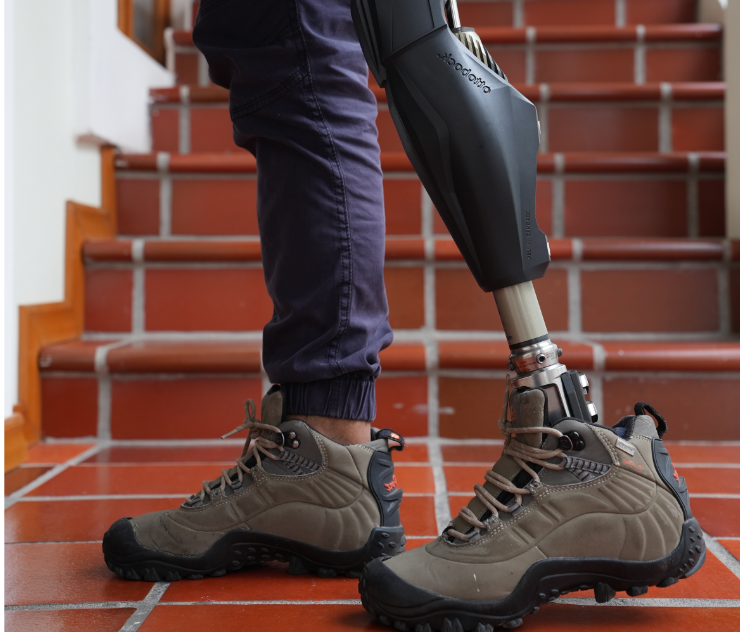



“Peer support helps people who were recently injured by explosive ordonnance to realise that there are ways forward.”
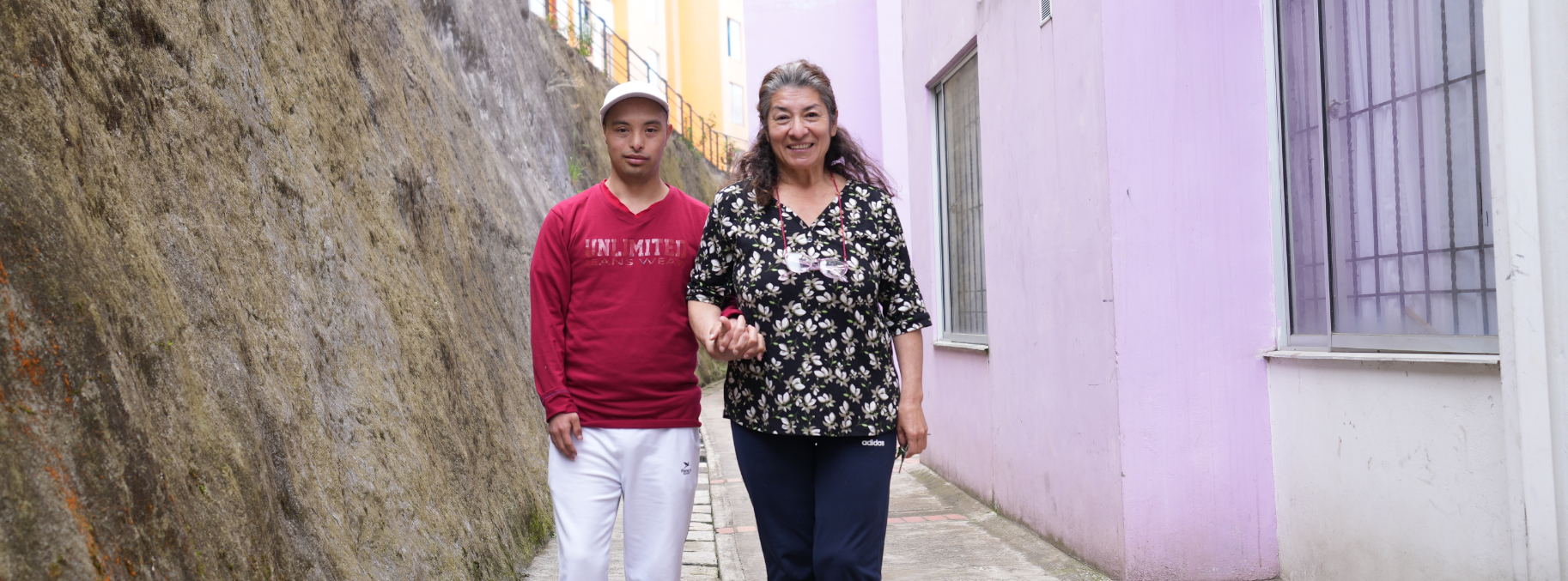



GLORIA’S STORY - "TAKE CARE OF YOURSELF SO THAT YOU CAN TAKE CARE OF OTHERS"
Gloria remembers all too well that night in April 2009 when the phone rang and she was ordered to leave her house.
“We will burn down your house if you don’t leave within 48 hours, and we will start by setting fire to your disabled son.”
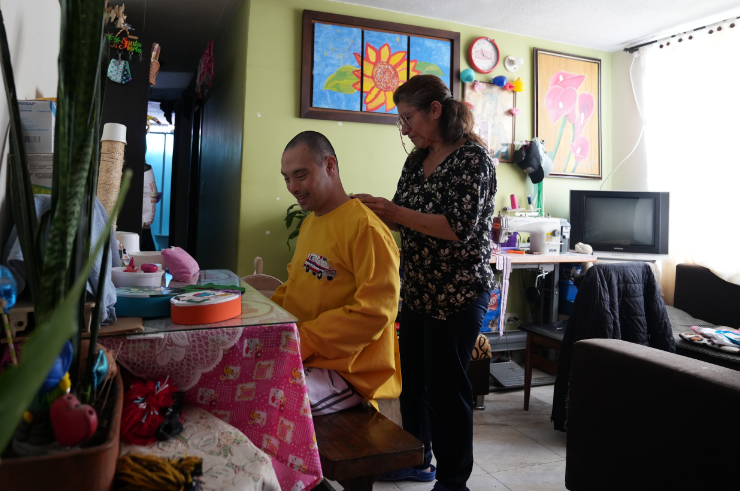



By the end of 2022, there were 4.8 million people registered as living in internal displacement in Colombia, as a result of conflict and violence (Internal Displacement Monitoring Centre, 2023).
Gloria was living with her family in a rural district in the Nariño Department. Paramilitary forces had taken control of the area during fierce fighting over territory. The eight family members escaped immediately, including Gloria’s son, Sebastian, who has Down’s Syndrome and several health conditions. They headed for Pasto, where some relatives were living. “Our relatives’ flat was too small to house all of us, so we had to sleep on the floor, and there was not enough food,” says Gloria. Sebastian, who was 17 at the time, found it hard to adapt, and he still felt afraid.
In 2023, 23,000 persons with disabilities were registered in Pasto. Of those, 3,000 are victims of the conflict(. Secretaría de Salud, Alcaldía de Pasto).
However, things got better with time. A few months later, they were granted “Internally Displaced People” status by the public authorities, meaning that they gained access to humanitarian assistance, and Gloria and her son obtained the right to live in a flat provided by social services.
Fleeing their home was a traumatic experience, but Gloria also sees a positive side. In Pasto, a bigger city, her son Sebastian has received the health, rehabilitation and social care that he needs. This was not possible in their small village, which was badly affected by the armed conflict.
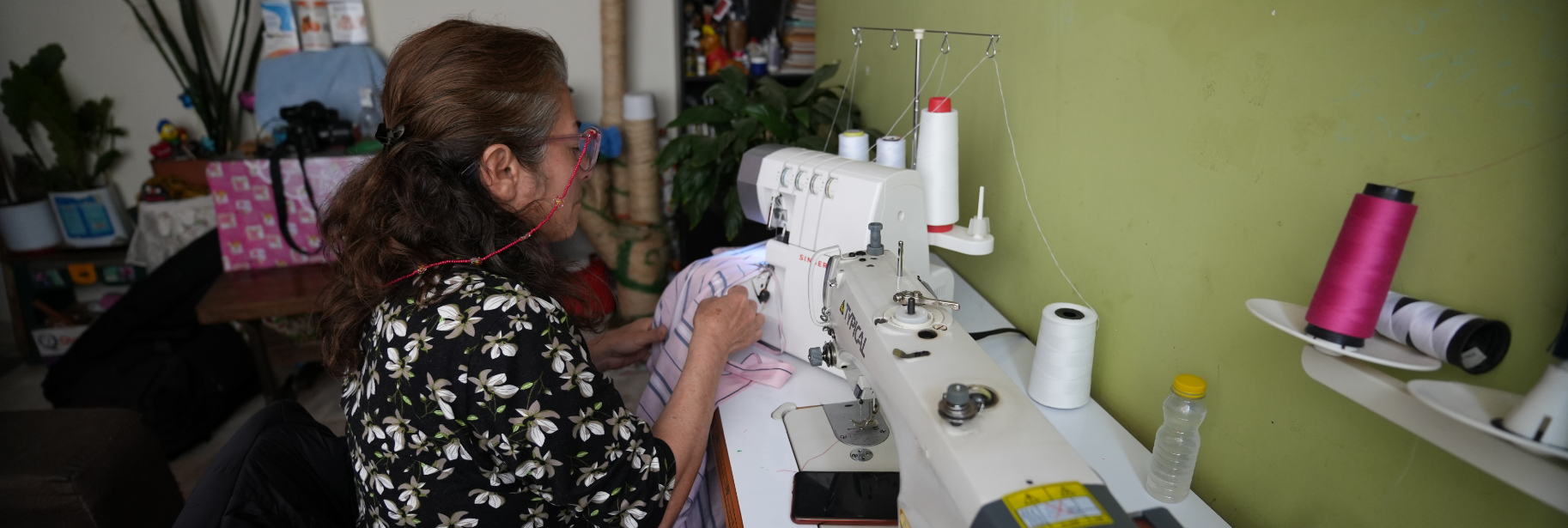



Globally, rehabilitation services are often concentrated in urban areas, making for access issues for people living in remote and/or rural areas. These challenges are exacerbated in contexts marked by violence and instability, where travelling to the place where the services are provided becomes even more complex, and also because of the mine threat. Indeed, Nariño is one of 16 Colombian departments contaminated by landmines (Landmine Monitor 2022).
Since settling down in their new city, Sebastian has received regular occupational therapy and speech therapy sessions. These rehabilitation interventions have been very helpful for developing coordination, crafting, and communication skills. In addition, Sebastian is part of the music group run by the “Fundación Batuta” and enjoys performing live with the other members of the group.
While Gloria is generally satisfied with the support her son has received, it has been difficult for him to access physiotherapy, which Sebastian needs for his balance issues, due to the long waiting list and the limited number of available physio appointments.
The vast majority of rehabilitation services, including physiotherapy, are delivered at the secondary and tertiary level of care (hospitals and specialised centres), while they are almost absent from primary healthcare. The provision of rehabilitation in primary healthcare, as close as possible to where people live, has the potential to increase access.
In addition, the social welfare scheme covers the costs of medical and rehabilitation care, but a few costly products are excluded from this coverage, like skin products and incontinence pants.
Social, health and rehabilitation services were significantly disrupted during the COVID-19 pandemic. “Despite attending some online health appointments and therapy sessions, Sebastian went backwards, because in-person therapies are much more effective.” It was a very difficult time for Gloria and Sebastian, who were isolated and lived in fear of the disease, as Sebastian’s health conditions meant that he was vulnerable to COVID.
During the COVID-19 pandemic, many persons with disabilities and their families have been disproportionately affected by social movement restrictions, physical distancing requirements and prioritization of certain health services–all of which have affected their access to essential services which are critical to maintaining health and functioning (WHO, Global report on health equity for persons with disabilities, 2022).
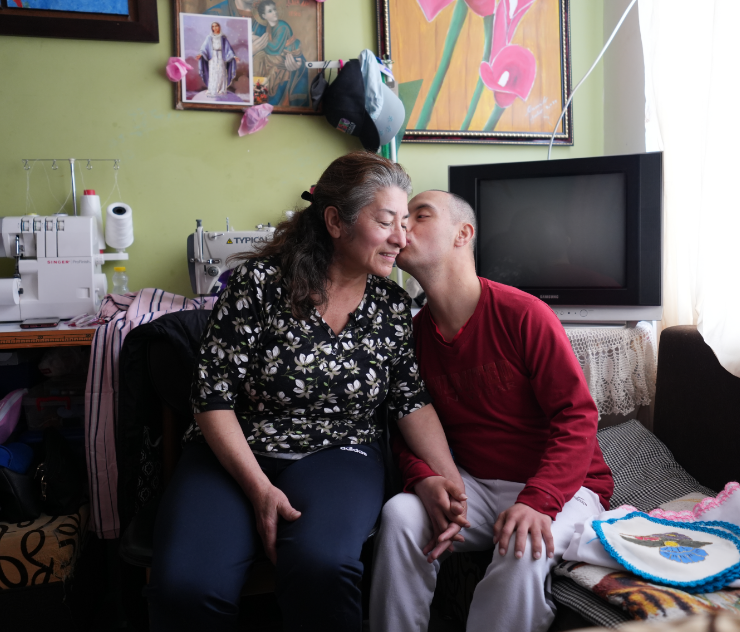



Taking care of Sebastian is a 24/7 occupation for Gloria, who earns her modest income by sewing and painting craft products in her home, in order to always be on hand if Sebastian needs her. Her income-generating activity was made possible by the support of “Pastoral Social”; the organisation provided her with a sewing machine and materials to get started.
Gloria is also active in a local group of caregivers. Following a training course arranged by Humanity & Inclusion, Gloria provides peer-to-peer support to other caregivers who are facing difficult situations, require some practical advice, or simply need to share and be heard.
Law 2281, adopted in 2023, creates the first “National Care-Giving System” in Colombia, with the aim being to “recognise, reduce, redistribute, represent and reward paid and unpaid care work through a co-responsible model between the state, the private sector, civil society, families, communities and between women and men in their differences and diversity.”
At the international level, in October 2023, the United Nations Human Rights Council adopted the resolution on the centrality of care and support from a human rights perspective.
“The most important thing that I learned on my journey, and that I always pass on to other caregivers, is that you need to take good care of yourself before taking care of others.”
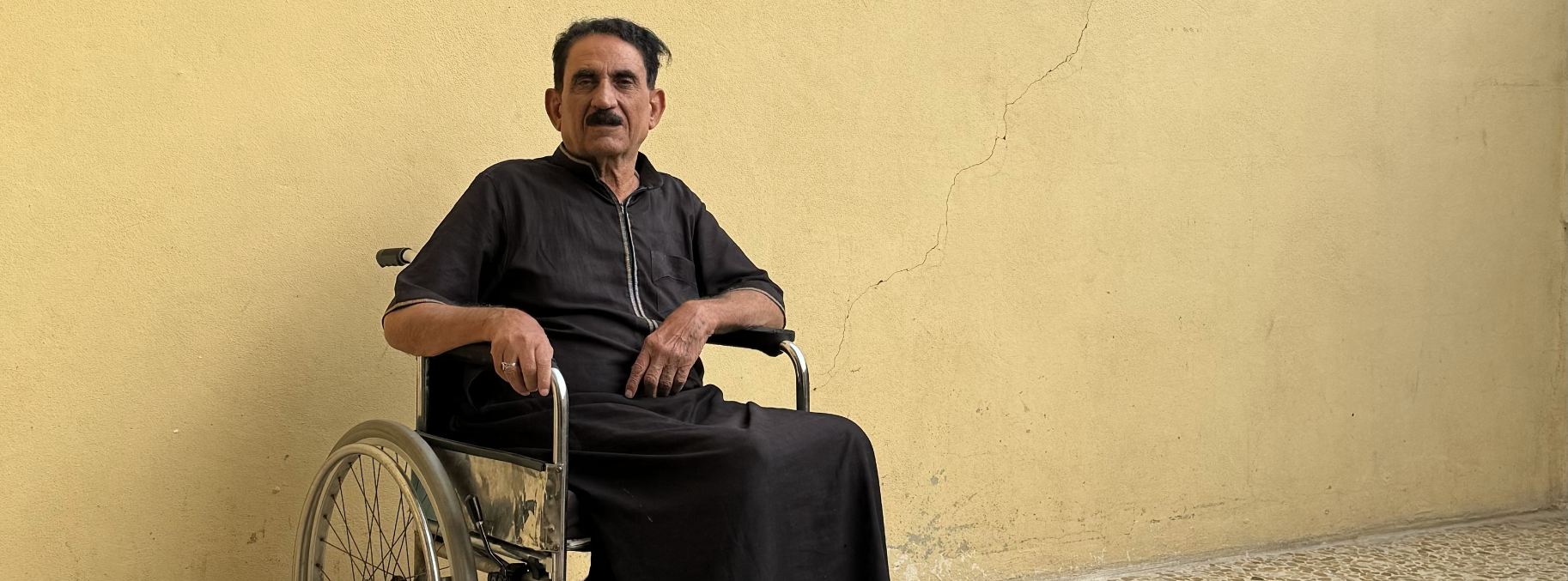



HMOUD’S STORY - AN EX-SOLDIER STRUGGLING TO FIND HOPE
Hmoud Khalaf Sulaiman’s life changed forever on 2 February 1988 during the Iran-Iraq war. At that time, Hmoud was 33 years old and was serving in the Iraqi army, when he was hit by a mortar. This horrible injury resulted in the paralysis of three limbs.
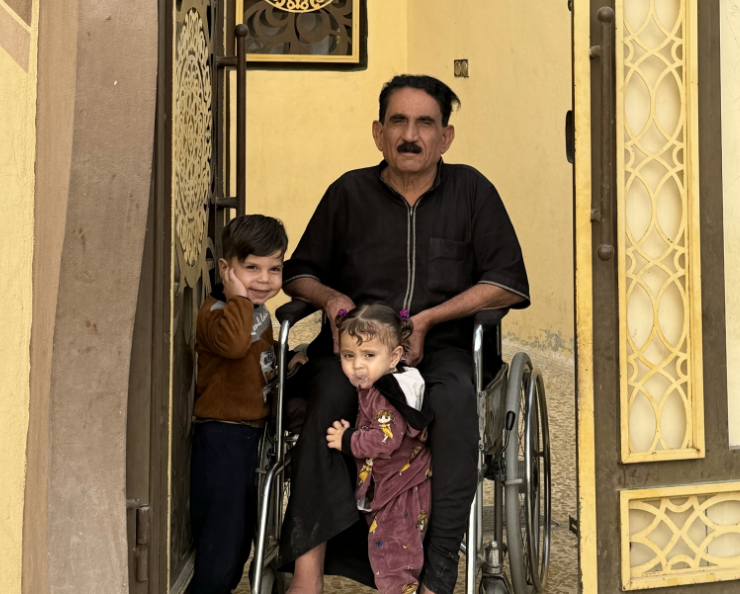



Hmoud currently lives in the city of Intesar in Nineveh Province. He and his family had to flee their hometown, Sinjar, when ISIS arrived. In his new town, he is renting a small house where he, his wife, their two sons, with their wives and their children, live together. He is unable to stand and walk and uses a wheelchair to move around the house due to his war injuries. He needs support with personal care and performing routine activities. Hmoud remembers exactly how he was injured: “I didn’t buckle my combat helmet, I liked to wear it in a stylish fashion. Therefore, as the mortar struck, my helmet flew away and I was hit. I was in Basra, at the border of Iraq and Iran, and I was immediately brought to Baghdad for open brain surgery.”
The injury has deeply impacted Hmoud’s life. His motivation, hope, and strength gave way to feelings of isolation and disappointment. He cannot live independently, is unable to attend social gatherings, and had to give up his hobby of buying and selling vehicles, for which he travelled all over Iraq.
In the interviews conducted by the International Organization for Migration (IOM) with 81 representatives of Organizations of Persons with Disabilities in Iraq, respondents shared that the abilities of persons with disabilities and the contribution they can make to communities are not recognized. When persons with disabilities are not (seen to be) active members of their communities, they become isolated and marginalized.
(International Organization for Migration (IOM), "Persons with disabilities and their representative organizations in Iraq: Barriers, challenges, and priorities", 2021).
“I feel ashamed asking others to help me move around. I started to feel this sense of exclusion the moment I sat in the wheelchair.”
He would like to attend ceremonies and family gatherings, but moving around is a real challenge because buildings, public places, roads, and even service infrastructure are not accessible. Hmoud keeps himself busy by browsing the internet and making friends online.
Hmoud did not have to wait a long time to receive his well-adapted wheelchair. However, the rehabilitation he received was not sufficient. Shortly after the injury, he had roughly one month of physiotherapy. “After only one month of physiotherapy, I was able to walk 8-10m on crutches, and I was gradually performing tasks at home.” However, this significant progress was lost when there was a long interruption to his rehabilitation plan.
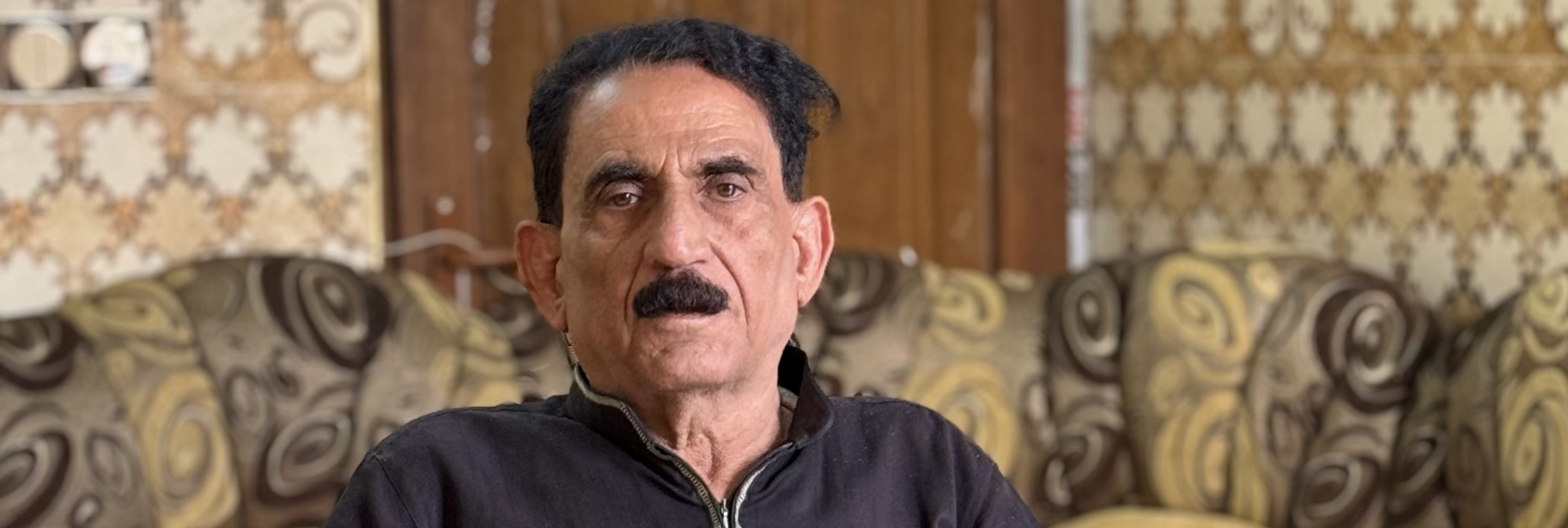



In Federal Iraq, each governorate provides rehabilitation services in their main specialised rehabilitation centre. A small number of physiotherapy departments also exist in general hospitals, but none are available at a primary or community health care level.
(Humanity & Inclusion Iraq, "Health Technical Strategy 2023-25")
Hmoud encountered numerous obstacles: the absence of services in the area where he lives, the worsening financial situation in his household with only the two sons bringing in a modest income, the lack of government support, and the limited support from humanitarian organisations. Furthermore, Hmoud did not feel comfortable doing some of the exercises with a female physiotherapist.
It is pivotal not only to increase numbers in the rehabilitation workforce, in terms of training and posts created, but also to ensure gender diversity in the workforce. Indeed, worldwide, services are often delivered without accounting for diverse gender needs or requirements.
(ReLAB-HS, "Rehabilitation through a gender lens", 2021).
Although in recent years Hmoud benefited from rehabilitation delivered by the NGO Humanity & Inclusion, it was not enough to restore his mobility after so many years.
Hmoud hopes to receive rehabilitation and improve his mobility. The lack of public and humanitarian support is challenging in the area where Hmoud lives; an area contaminated by explosive ordnance, and where many people still have to contend with the consequences of conflict on a daily basis.
In 2022, protracted internal displacements, explosive ordnance threats and limited availability of basic services and livelihoods left 2.5 million people still in need of humanitarian assistance in Iraq.
Despite extensive efforts by humanitarian partners to clear contaminated areas, approximately 3,016km² of land remains contaminated, and the full extent of contamination is undefined.
(OCHA. Humanitarian Needs Overview Iraq, 2022.)
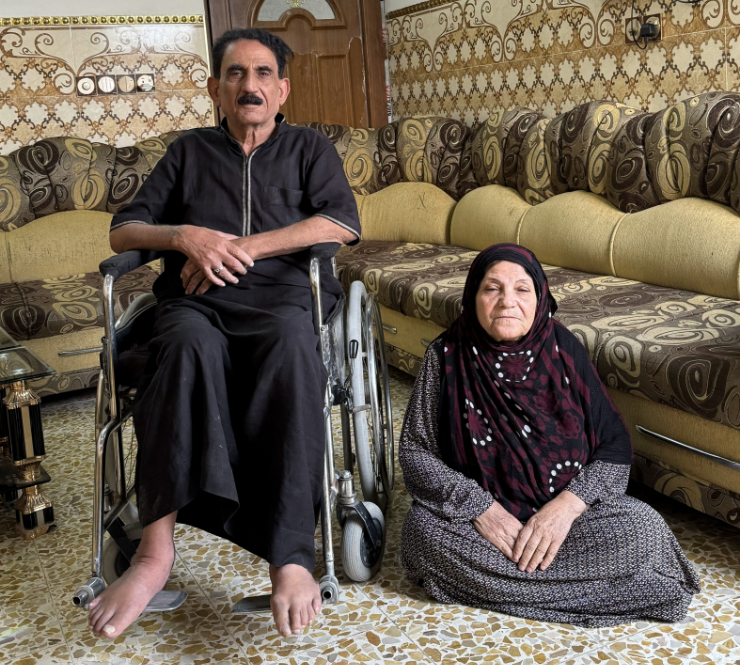



“If I had had a longer period of physiotherapy right after the accident, I wouldn’t be in a wheelchair now,”
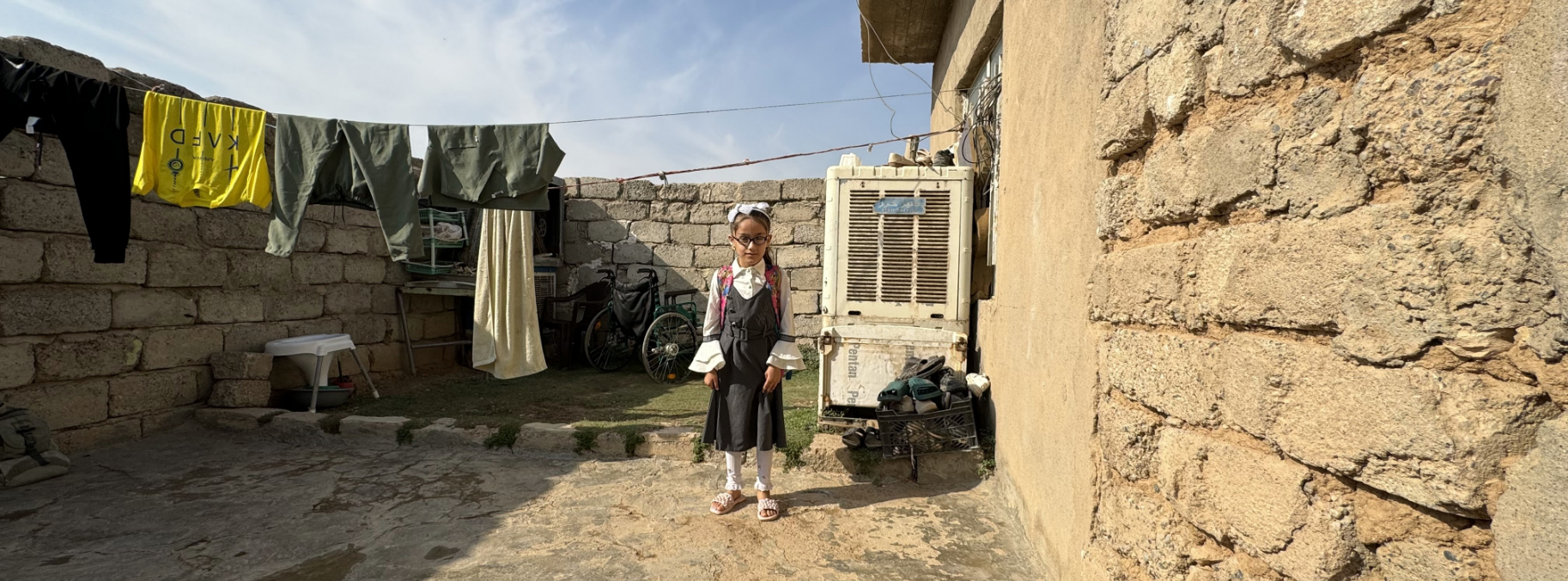



SHAHA’S STORY – A YOUNG LIFE FOREVER AFFECTED BY AN EXPLOSION
Shaha is nine years old and is in Year 3 at primary school. She lives in the rural area of Rajam Hadid in Iraq. Shaha’s favourite time of the year is Eid (a Muslim celebration) because she is given clothes. “I love dolls and clothes,” she says.
When Shaha was three years old, she fled her home with her parents and seven siblings, because ISIS took over their neighbourhood. As they were travelling to another area, an improvised explosive device (IED) exploded, killing Shaha’s father and two sisters, and leaving three other siblings severely injured. Shaha had severe burns on her hand and shoulder, along with jaw and eye injuries caused by shrapnel.
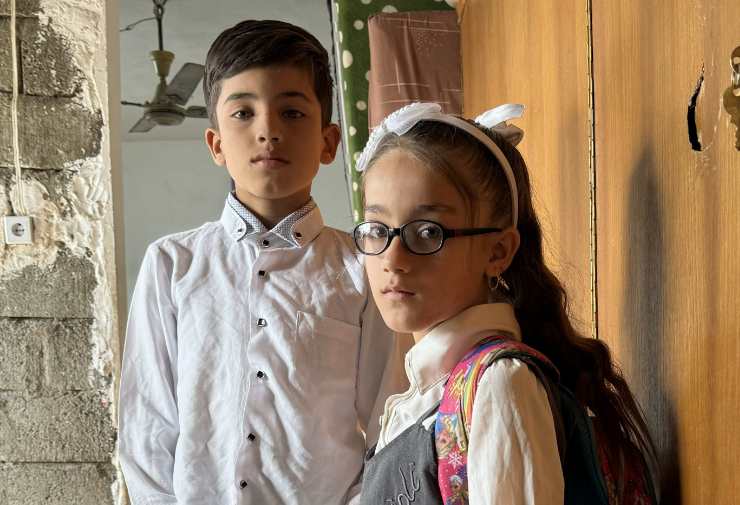



Iraq is one of the most heavily Explosive Ordnance contaminated countries in the world with an estimation of 3,225km² of land being contaminated. In 2021 it was estimated that 8.5 million people in the country were at risk due to the contamination.
(Humanity & Inclusion report, 2021, No safe recovery: The impact of Explosive Ordnance contamination on affected populations in Iraq)
At such a young age, Shaha has already undergone five jaw and three eye surgeries. She now has prosthetic eye lenses and wears glasses. Shaha had difficulty in moving her right hand, but with the physiotherapy that she has received from Humanity & Inclusion’s professionals she is now able to move her hand and fingers. As Shaha gets older, she will need additional physiotherapy sessions to maintain good mobility in her hand.
Shaha’s mother is grateful for the support provided by neighbours, friends and Humanity & Inclusion’s staff. “With the help of kind people, we were able to pay for Shaha’s eye surgeries, and the support of Humanity & Inclusion not only helped Shaha but also encouraged me to stay strong.” The family could not have otherwise afforded these health and rehabilitation costs, considering that the only source of income was her sister’s sewing work.
The horrors of the war not only caused physical but also psychological suffering.
"Shaha’s psychologist said that her life stopped at the moment of the explosion,” says Shaha’s mother.
After the explosion, Shaha couldn’t speak, was constantly having nightmares, and developed eating disorders. The psychotherapy sessions in which she took part for over a year-and-a-half had a very positive impact on her wellbeing and ability to communicate. Shaha is happy to go to school, although she does say that “girls in school bully me because I wear glasses and I have burns.”
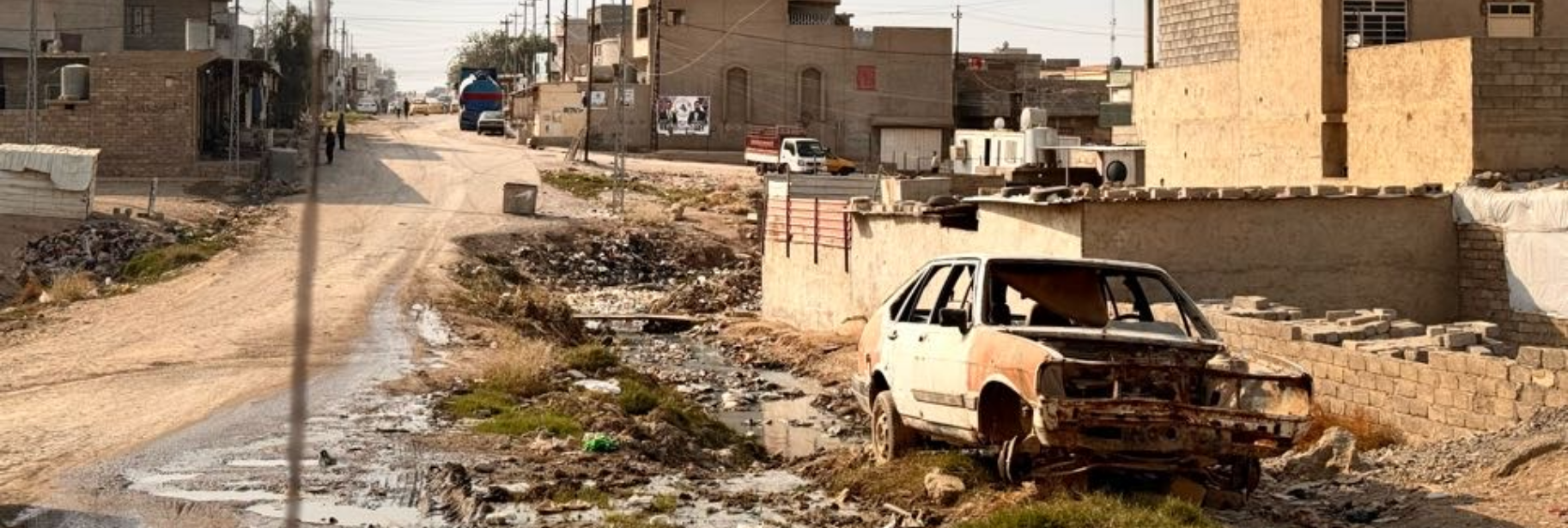



Mental health concerns increase in countries affected by explosive ordnance as experiencing distressing and traumatic events caused by long-term violence can result in debilitating levels of reduced self-esteem, permanent and lifelong disability, depression, feelings of insecurity, social withdrawal, self-harm and suicide.
(Humanity & Inclusion Iraq, "Health Technical Strategy 2023-25")
There are no health services, playgrounds, or schools close to where Shaha’s family lives. Children struggle to reach school in the winter months as the streets are muddy and unpaved. Sometimes Shaha cries saying that she does not want to go to school because she has to walk a long way.
While humanitarian NGOs have been responsive to Shaha’s needs, out-of-pocket expenses to cover medication and transport costs are a significant burden on the household. These costs are not likely to be reduced in the future. Shaha’s health conditions require regular medical follow-up, and additional eye surgery at an older age. One of Shaha's brothers has a brain tumour, resulting in severe brain damage and requiring multiple surgeries. In addition to the health-related costs, Shaha’s mother says that the healthcare worker shortages cause long waiting lists, even for a simple blood test.
Despite the existing programmes to support persons with disabilities and their caregivers, many persons with disabilities are unable to receive social protection payments.
In order to apply, people must first access a centrally-located centre, and then be assessed as having the required “level” of disability (expressed as a %), which involves several trips and complicated procedures.
Therefore, persons with disabilities often rely on NGOs for their basic needs.
(Action Against Hunger, "Accessing social protection in Iraq: Mapping of program and analysis of barriers", 2023 AND Humanity & Inclusion Iraq, "Health Technical Strategy 2023-25")
The family remains strong and close. Shaha's older brother is a guiding light. They have called him “baba” (dad) ever since their father died. He is a high-achieving student in his second year of anaesthesiology, and has great ambitions to support his family to the best of his ability.
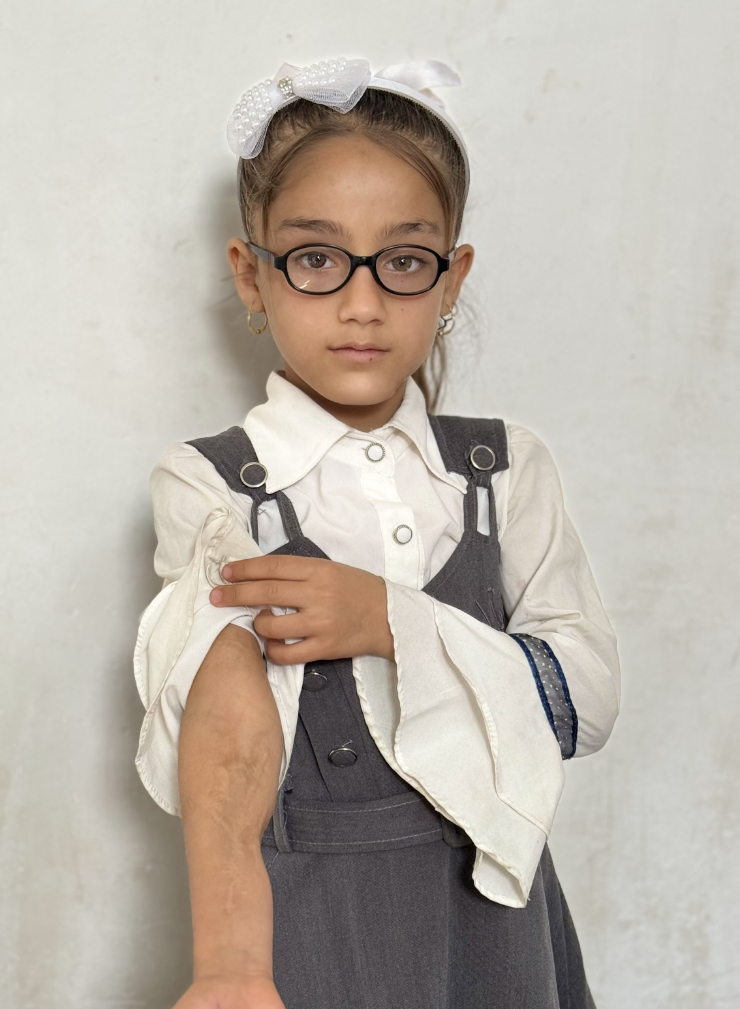



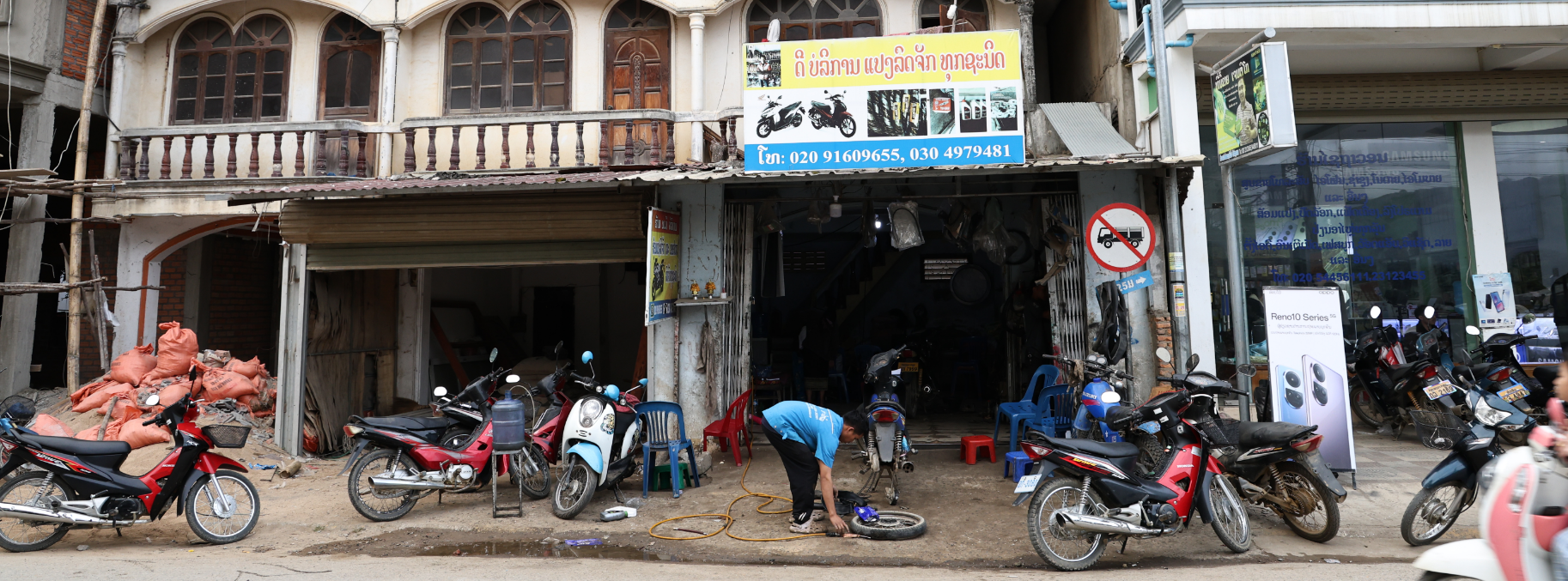



MR. DEE’S STORY - A ROAD CRASH SURVIVOR AND A SUCCESSFUL MECHANIC
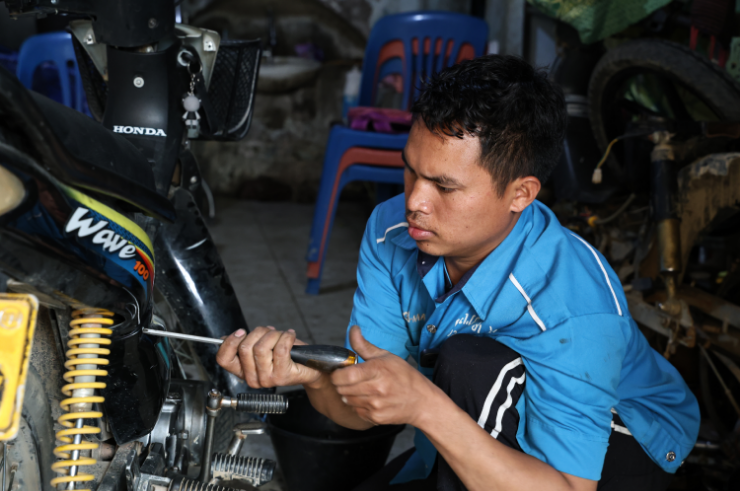



Mr Dee is a mechanic, husband, and a father of two children under the age of five. At 16, he was riding on a motorbike with his cousin to reach a farm where they had found work in an area known for its bending and steep roads. The brakes of his motorbike didn’t work properly, and he could not avoid hitting the concrete safety barriers alongside the road.
In Lao PDR, annual crashes rose by 35% between 2010 and 2020, and the number of fatalities increased by 67% to reach over 1,000. The accounts of crash survivors are testimony to the severe impact of accidents on personal health and family finances. (World Bank, PRESS RELEASE NO: 2022/030/EAP, 2021).
He felt no pain when lying on the road. However, when he tried and failed to stand up, he realized that there was a serious problem.
Luckily, his cousin was not injured. He placed Mr Dee in a safe place by the side of the road and drove on the motorbike to Mr Dee’s family home to alert his parents about the accident. The parents arranged a car, picked up their son and drove him to the nearest hospital, which was four hours away. The doctor immediately stated that he needed his left leg amputated, just below the knee.
“I didn’t know anything about amputation and disability. I was very concerned about my future, especially whether I would be able to work and get married.”
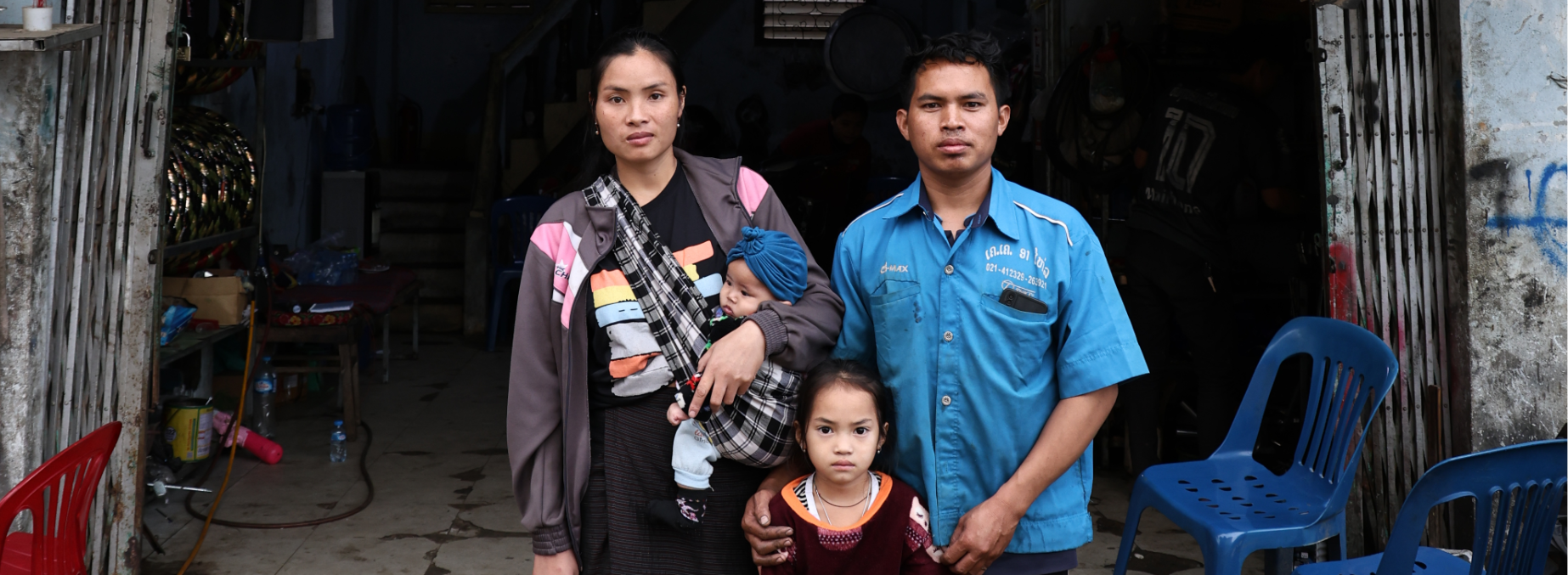



In addition, he felt guilty because of the disappointment he thought he was causing, since the eldest son is traditionally expected to take care of the whole family. During the month he spent in hospital, he lay in bed all the time and never received nor was told about any psychosocial support, prosthetics or rehabilitation service. He fell into a deep depression. He hardly left his bedroom once back at his parents’ home. Very few friends came to visit him.
Luckily, his cousin, who is in the army, told him about the rehabilitation services provided in a bigger and more distant hospital. It took almost a year for Mr Dee’s family to take him to the rehabilitation centre, a significant length of time considering the impact of amputation on a young man’s psychological and physical wellbeing.
While the medical and transport costs were covered by the public system, the transport costs were only reimbursed after the first appointment at the hospital, and the accompanying people had to pay for themselves. This cost around 200 USD for Mr Dee’s father, who stayed with him for two weeks at the centre. Only after a year, when Mr Dee’s family had managed to raise this amount of money, did they visit the rehabilitation centre to get his prosthetic leg fitted.
In conflict-affected countries, rehabilitation services and provision of assistive technology are often designed to respond to the needs of veterans and/or victims, as occurred in the aftermath of the Laotian Civil War (1959–1975).
However, victim assistance frameworks refer specifically to the fact that there should be no discrimination against or among victims, or between survivors and other persons with disabilities, who should benefit from services in the same manner.
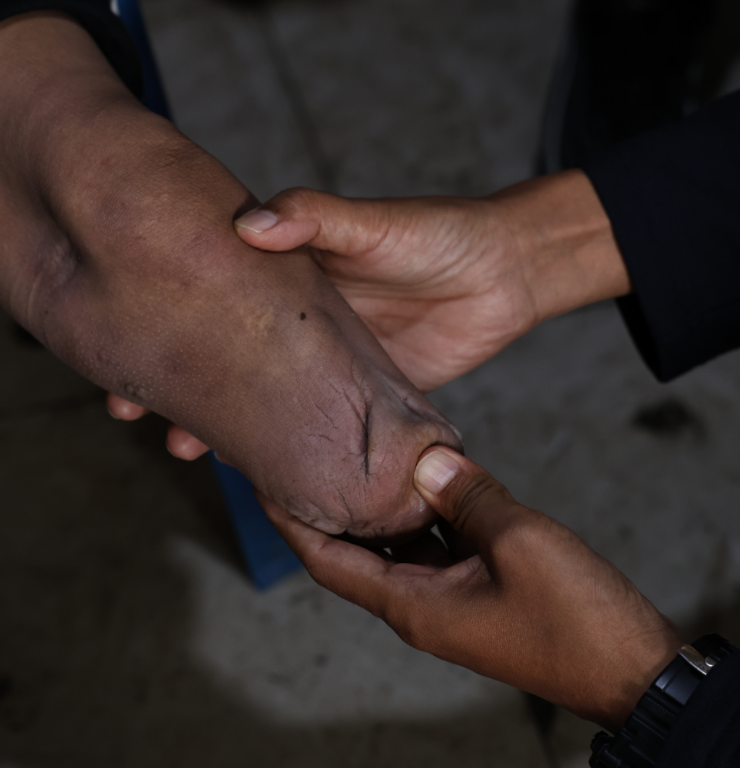



“I had a new life, and I gained a lot of confidence with my prosthetic leg. I decided to go to the capital city and joined a vocational programme to become a mechanic.”
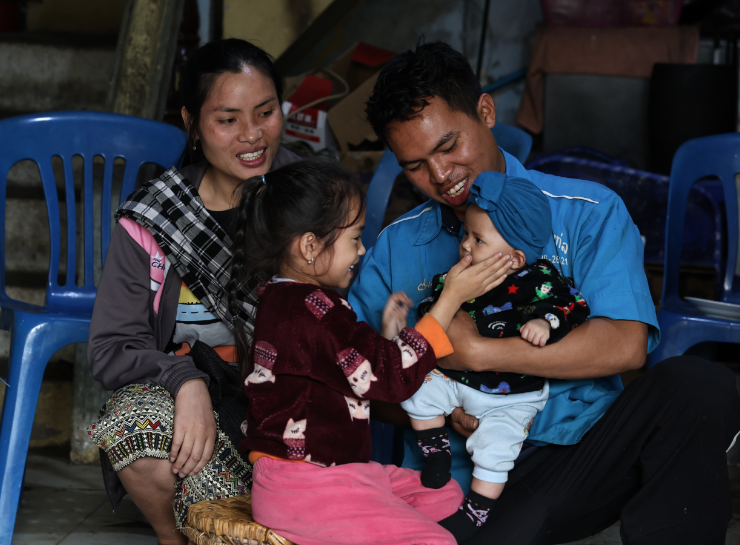



By improving functioning, rehabilitation and assistive technology increase access to education, social engagement, and work activities, greatly contributing to the individual’s ability to participate in multiple spheres of life.
The return on investment is significant: for every dollar invested in assistive devices, there is a return of nine dollars (Global Partnership for Assistive Technology (2020). The Case for Investing in Assistive Technology.)
In 2020, with the support of Humanity & Inclusion, he managed to acquire business management skills and open his own garage, on the ground floor of the building where his family lives, in a busy street of the provincial town of Sam Neua. He also receives help to continuously access rehabilitation. Indeed, Mr Dee needs a new prosthetic leg roughly every two years, which involves a one-week stay in hospital each time.
He is very satisfied with his business, as he has a lot of loyal customers. And most of all, he is proud that he can support his parents, as a good first-born son is expected to do.
“Most of the customers don’t know about my leg. They don’t notice it. I can do most of the work by myself. My neighbours and friends come and help when I need assistance with heavy lifting.”
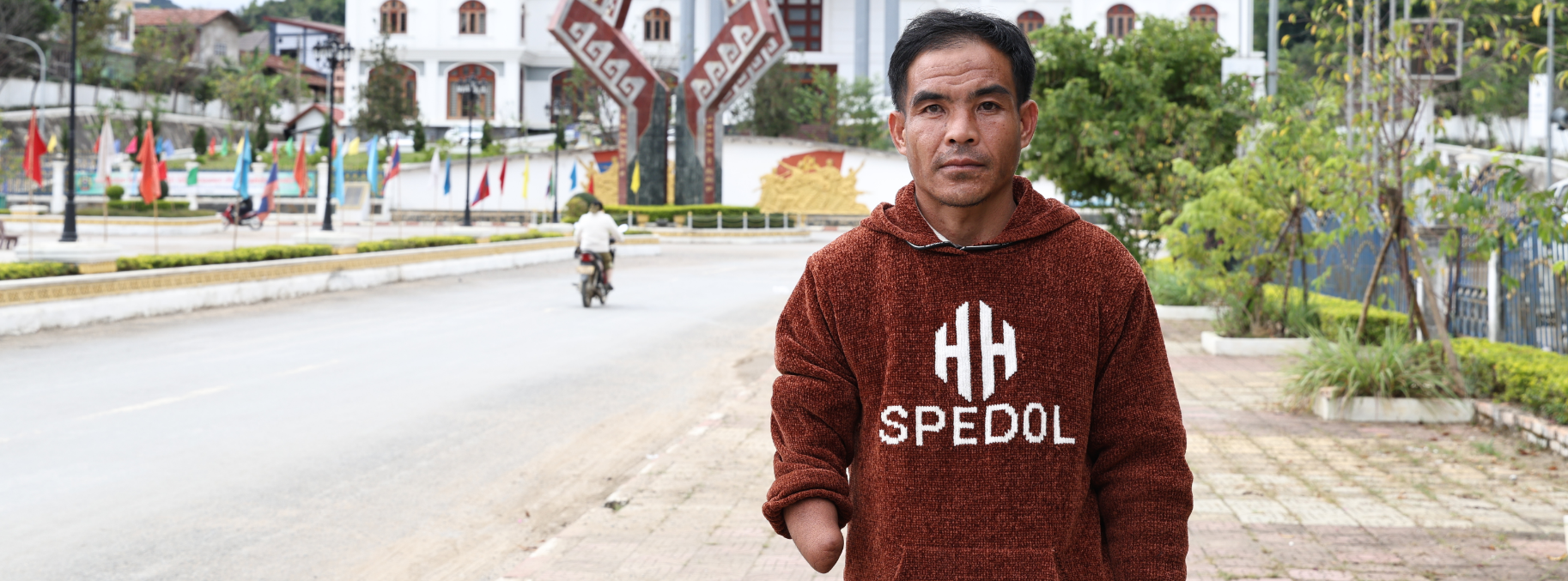



MR. NGOK’S STORY - "ALL SURVIVORS SHOULD HAVE ACCESS TO REHABILITATION SERVICES"
Mr Ngok was eight when he lost his right hand in an unexploded ordnance (UXO) accident. The teacher had taken the children from his class to harvest wood in the forest. Mr Ngok’s machete hit a UXO. The accident killed a child and injured two more. At that time, Mr Ngok did not know what kind of weapon had caused the explosion, but he now believes that it was a cluster munition.
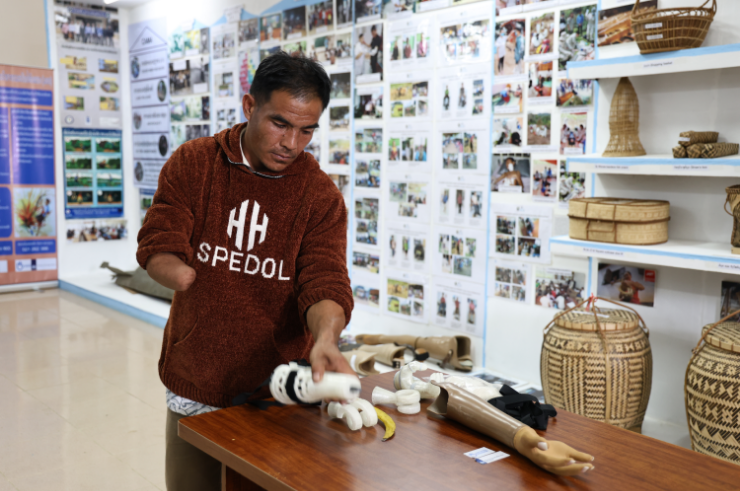



Launched from the ground or dropped from the air, cluster munitions consist of containers that open and disperse submunitions indiscriminately over a wide area. Up to 40% fail to detonate on impact. Then they become de facto land mines that kill and maim indiscriminately long after the conflict has ended. The Lao People’s Democratic Republic (Lao PDR) has the world’s highest level of contamination by unexploded cluster munition remnants, resulting from aerial bombing raids carried out by the United States (US) from 1964–1973 amid the Second Indochina War. (Landmines Monitor 2023)
Mr Ngok is now 38, is a farmer and lives in the rural Houameuang district (in Northern Lao PDR) with his wife and children. “It was really hard to do the heavy work in the fields with one hand”, he says. Indeed, Mr Ngok had to wait almost 20 years before he could access the rehabilitation services and devices that he needed.
After the accident, the doctors removed only his fingers at first; but the limb was damaged by chemicals contained in the weapon, and they had to amputate the whole hand in subsequent surgeries.
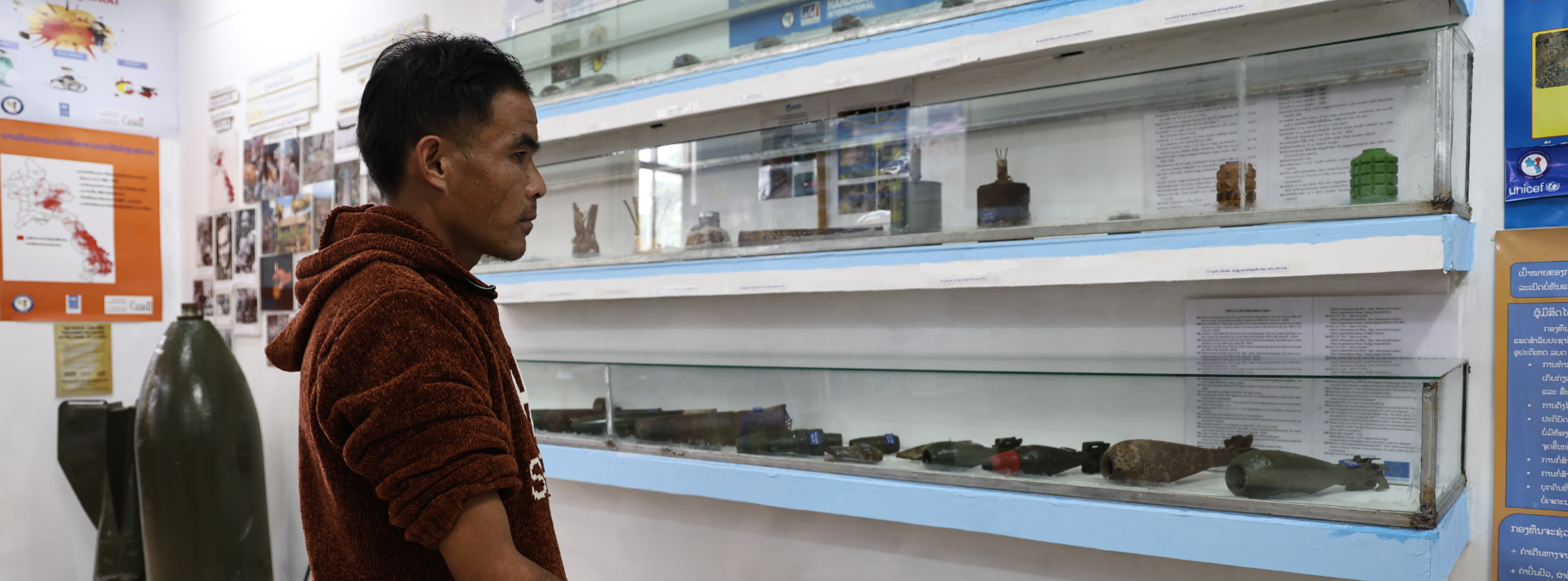



Mr Ngok remembers the feeling of desperation when he understood that his right hand was gone. The support from his parents and the doctors, and seeing other children in the hospital who had been injured like him, convinced him that he would be able to continue his life.
During the month he stayed in hospital, he was not told about and did not receive physiotherapy, prosthetics, or any other rehabilitation services or devices.
In Lao PDR, rehabilitation is offered primarily at central/ provincial hospitals and in rehabilitation centres. In general, MOH does not provide rehabilitation at district hospitals. There have been efforts to provide a service at community level, but these remain limited in scope and geographic reach.
(Lao PDR Ministry of Health, with support from the United States Agency for International Development and the World Health Organization, "Systematic Assessment of Rehabilitation Situation in Lao People’s Democratic Republic", 2018.)
He went back to school, determined to continue studying and adapt to the loss of his right hand. Despite the sometimes hostile environment, with harsh comments from classmates and neighbours, he managed to continue studying until he was 18. He was already 27 when he received help to access rehabilitation services for the first time. He was referred by village authorities to the Provincial Rehabilitation Centre, a four-five hour drive from his home. He stayed in the centre for two days while he received his first prosthetic arm.
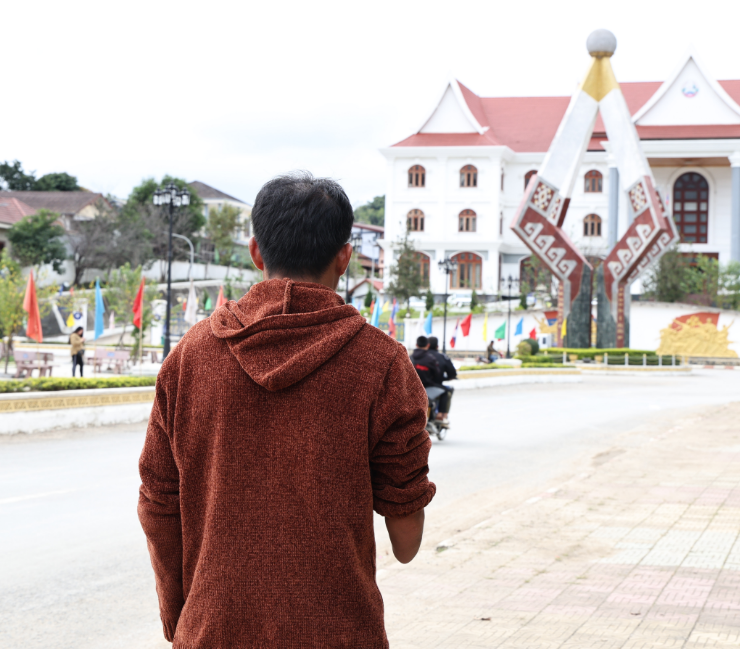



"Assistive products (primarily prosthetics, orthotics, and a limited number and type of mobility aids) are available (free of charge) through five MOH-supported rehabilitation centres. Development partners contribute to materials costs, and the financial sustainability of this service has not yet been fully addressed."
(Lao PDR Ministry of Health, with support from the United States Agency for International Development and the World Health Organization, "Systematic Assessment of Rehabilitation Situation in Lao People’s Democratic
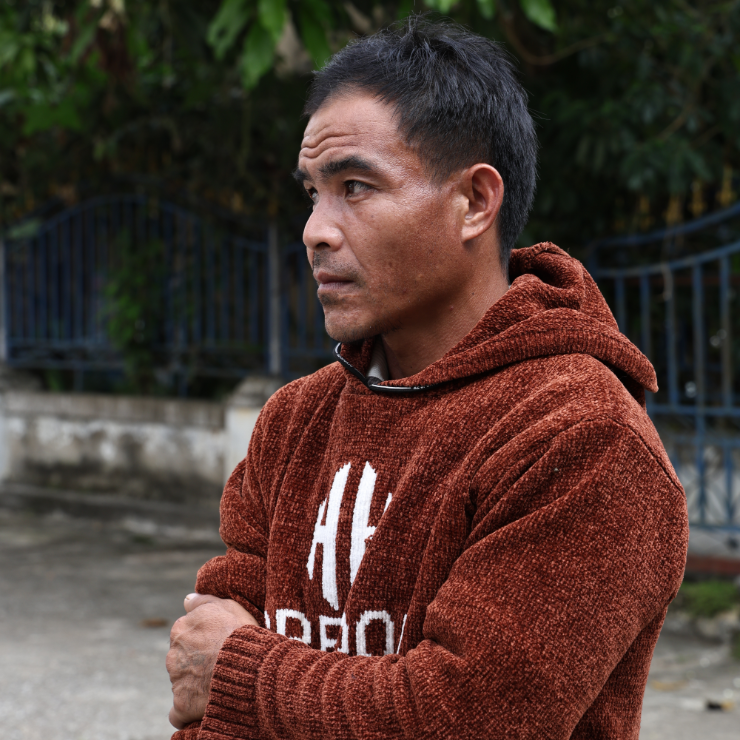



The device did not have many features, but it did give him confidence: “I could wear it at parties and outside of my village, without people knowing that I was an amputee”, he recalls with a broad smile. He has had three different prostheses over the past 11 years. In 2023, he received his latest one, a 3D printed prosthetic arm with an adapted attachment, from the Provincial National Regulatory Authority. He hopes for an even more functional device in the future in order to become more independent in his daily life.
Policy frameworks have been developed over the years to guide the response to rehabilitation needs and victim assistance. The Lao PDR National Rehabilitation Strategy 2018-2025 aligns with WHO’s global and regional actions.
Victim assistance has a dedicated policy framework for the 2022-26 period, and is integrated into Safe Path Forward III 2021–2030 and the Multi-Year Workplan 2022–2026 (Landmines Monitor 2023.)
Looking back, he is very thankful for the services he was able to access, but also thinks about those people whose needs are not yet met.
“There are a lot more people affected by UXO in Lao PDR. Every UXO survivor should have information on and access to rehabilitation services, especially in the most remote areas.”
He is still not able to access all the services he needs. His eye was damaged in the explosion, and some shrapnel fragments still remain under his skin today. Although there is free eyecare at the district level, he was not referred to the appropriate services, and he could never spare the time and resources needed to travel to the district capital to get his right eye checked. Financial accessibility is indeed a concern.
“I wish that there were more grants to support victims’ livelihoods, so we can provide for our families.”
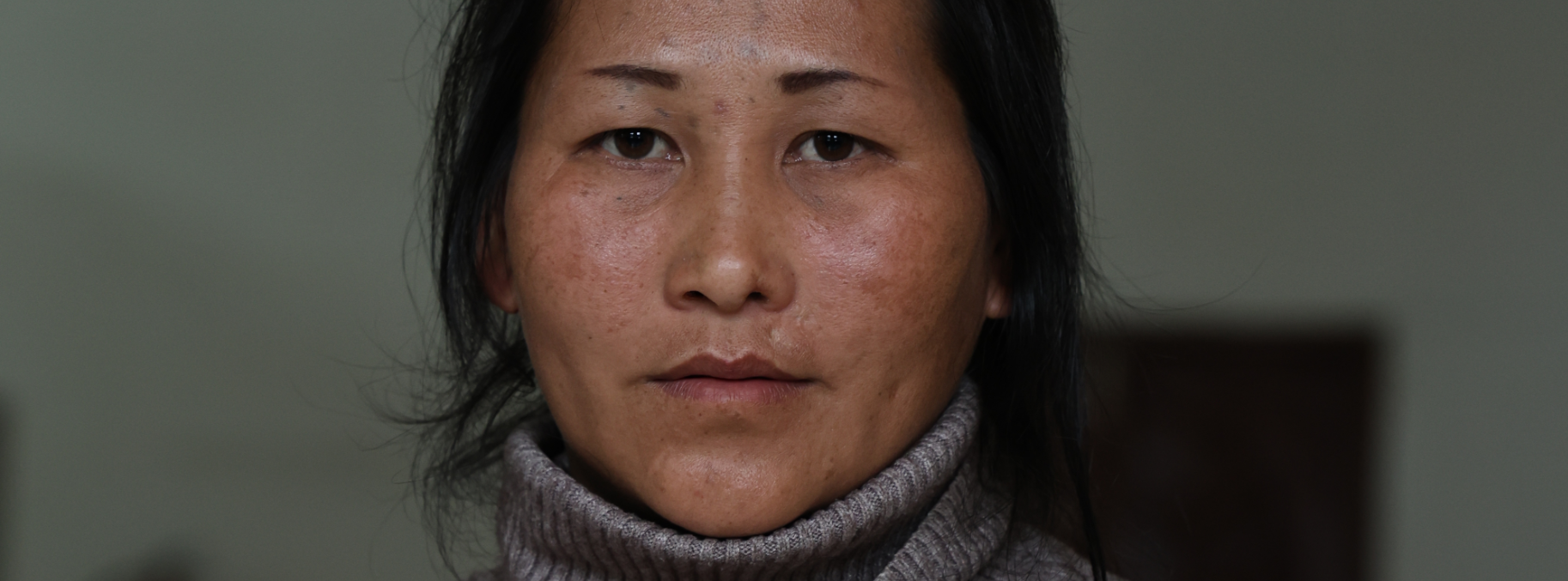



MRS. XOUA XIONG’S STORY - "I STILL FEEL DIFFERENT"
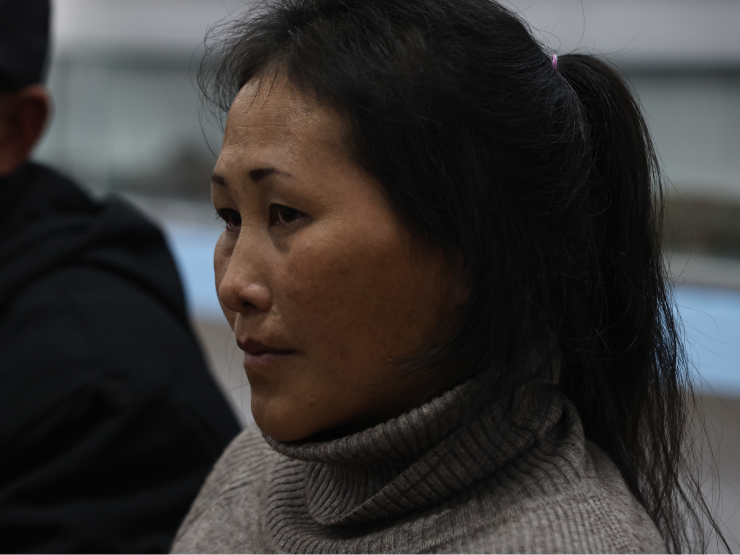



Mrs Xoua Xiong is 33 years old and lives in a rural Hmong community in Houameuang district. Mrs Xoua Xiong and her husband grow rice and corn, and breed chickens, pigs and goats to support their six children. They work as daily labourers on other farms when their earnings are low. As a child, she used to work in the fields with her father and brother. They did not know that the land was contaminated by unexploded ordnance (UXO).
Unexploded ordnance (UXO) contaminates nearly 25% of the country’s villages. (Lao PDR Ministry of Health, with support from the United States Agency for International Development and the World Health Organization, "Systematic Assessment of Rehabilitation Situation in Lao People’s Democratic Republic", 2018.) Over the past five years, an average of 50–60km of cluster munition contaminated land has been released annually. Lao PDR’s Multi-Year Workplan for 2022–2026 aims to release 500km (Landmines Monitor 2023.)
Mrs Xoua Xiong was severely injured in a UXO accident when she was doing farm work at the age of nine. She remembers the long journey to the provincial hospital where surgeons amputated her right arm below the elbow:
“I was first carried to my house, then it took hours for my parents to reach the main road where my father could rent a truck and drive me to the hospital.”
63% of the Lao population lives over 100km from a rehabilitation centre. (Humanity & Inclusion, "iFAR Diagnosis (Improving financial access to rehabilitation services) -Analysis of the economic system of functional rehabilitation in Lao P.D.R", 2015 and updated in 2018)
She went home in severe physical and emotional pain three days after the amputation. She had to undergo a second surgery because the physical pain intensified. At the time, her family received some financial support from an international NGO, but they were not informed about the available rehabilitation services or assistive devices.
Furthermore, she had to contend with the negative reactions of some members of her family and of the community, who did not want to interact with a girl with an amputated limb. However, her teachers and the other students at school were supportive. For example, Mrs Xoua Xiong recalls that they did not ask her to take part in activities that she could not undertake, such as cleaning the school. Nevertheless, she felt very different from the other children: “I did not like going out, I preferred to play alone and spend time on my own”.
Years later, when she was 13, she received her first prosthetic arm at Xian Khouang Rehabilitation Centre, after being identified by village authorities and supported by a non-governmental organisation.
Across large parts of the world, girls and women of all ages with any form of disability face multiple forms of discrimination and inequalities, driven by multiple (and overlapping) attitudinal barriers, prejudice and stereotypes. (UNDP Asia and the Pacific, 'Understanding and tackling intersectional stigma experienced by women and girls with disabilities ", 2022.)
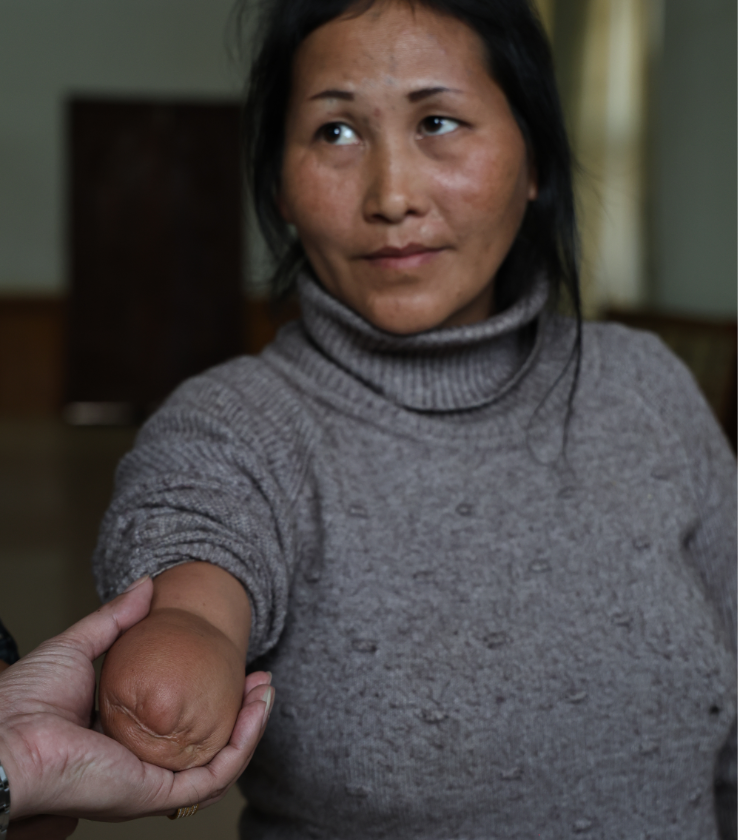



“At school, I felt more confident, and it was easier for me to write. If somebody looked at me, they could not guess that I was an amputee.”
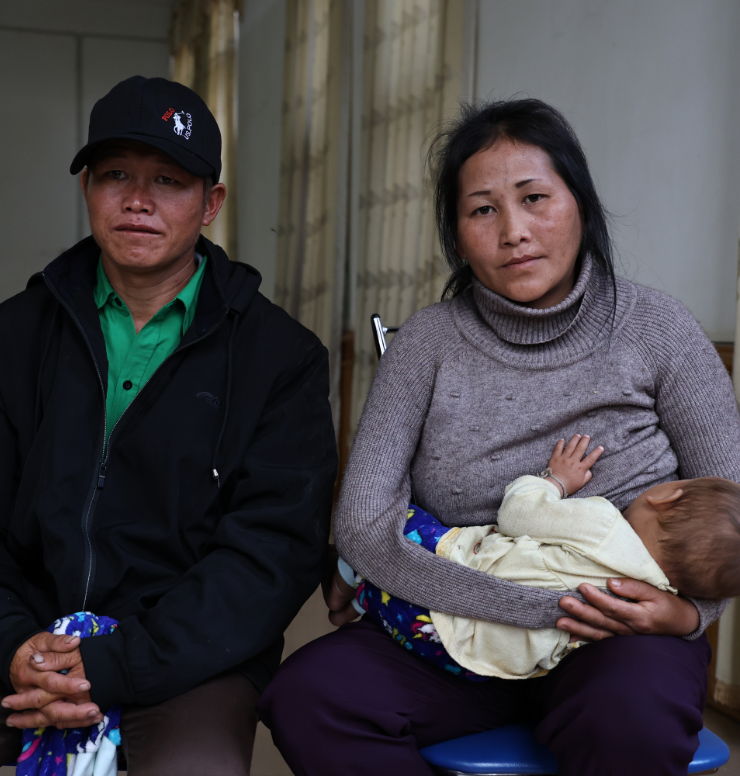



In 2022, Mrs Xoua Xiong received a 3D prosthesis from the Provincial National Regulatory Authority.
In the case of a UXO incident, the National Regulatory Authority’s victim assistance unit provides follow-up and links to operators to ensure the delivery of essential support.
(UNDP, “Background paper for UXO donor and media field visit, 31 March–2 April 2021,” April 2021.)
She says that the device was too tight, as Mrs Xoua Xiong was slimmer at the time the measurements were taken. She barely uses the device now: “it helps with my daily work and small tasks, but it does not have all the functions of a real arm and it does not help me carry heavy loads”. Without external support, Mrs Xoua Xiong does not know how to get a referral to a rehabilitation centre to adapt her prothesis, nor how to cover transport and accommodation costs.
In Lao PDR, rehabilitation at district and community levels is very limited, and case management /referral pathways are underdeveloped.
(Lao PDR Ministry of Health, with support from the United States Agency for International Development and the World Health Organization, "Systematic Assessment of Rehabilitation Situation in Lao People’s Democratic Republic", 2018.)
As an adult, she still feels very different from the other women, and thinks that some people in her village do not respect her because of her impairment. She is grateful for the support given by some organisations to persons with disabilities, and that she can count on the support of her husband, who says: “she is my wife and I love her. I don’t care if she can’t do the same work as other people.”




ANDRÉS’ STORY - “MOVING ON”
Andrés was travelling by motorbike between Guayacana and Llorente (in the Nariño department), when a cylinder bomb exploded close to his motorbike.
Andrés was 23 at the time of the accident, and he is 41 today. He was seriously injured and underwent multiple surgeries: two amputations on his right leg, thoracic surgery, tracheostomy, and arm and eardrum reconstruction.




145 casualties from mines and explosive remnants of war were reported in Colombia in 2022. Colombia is among the five countries where new use of antipersonnel mines by non-state armed groups has been reported in 2022. Indeed, the number of incidents of mines attributed to non-state armed groups has increased by 30% since 2021. (Landmine Monitor 2023).
Andrés attended hospital physiotherapy and speech therapy sessions, and he started the process of being fitted for his first prosthesis. The second amputation hit him very hard psychologically, and he felt angry, sad, and disillusioned. However, he did not receive psychological counselling at that time.
Victim assistance (VA) has always been among the less well-funded pillars of Humanitarian Mine Action (5% of the total global mine action budget in 2021 and 2022). In 2021, dedicated international financial support from the global mine action budget for VA reached its lowest level recorded since 2016, despite the growing needs. (Landmines Monitors 2022 and 2023).
Once discharged from hospital, Andrés moved to Pasto, the capital city of Nariño Department, where he could have better access to services and start a new life. With continuous occupational therapy and physiotherapy interventions, Andrés became more hopeful, but still uncertain about what he would do from then on. Andrés was able to rely on the psychosocial, livelihood, and legal support provided by the “Pastoral Social”, a diocesan organisation in Pasto, and Humanity & Inclusion.
“Recovery was a bitter process, because the system is precarious and there is little state support and aid for the victims.”




While overcoming the physical and emotional pain, Andrés did everything he could to find the best prosthesis that would meet his needs and match his preferences. This did not prove to be an easy journey, in a system that still considers good-quality and high-tech assistive technology (like prostheses) to be luxury products. His first basic prosthesis, provided by the public system. did not enable him to have full mobility and independence, for example, he could not walk on bumpy paths or climb stairs, and he felt quite uncomfortable and sore. He knew that this prosthesis was not right for him, so he started looking for a better prosthesis that would meet his needs. Once Andrés had a clear idea of what he needed, he went to a traumatologist to obtain a prescription. Andrés found several administrative hurdles in his way, with a lot of back-and-forth from one medical service to the other. In addition, the medical professionals often questioned his request for a better prosthesis, which was seen as something “nice to have”, not as a necessity.
Andrés finally got a high-tech prosthesis six years after the accident. Thanks to his determination, he managed to get his new prosthesis fully funded by a public welfare scheme. Since then, Andrés has changed his prosthesis twice to ensure that it is adapted to him and properly maintained.
Receiving and adapting the prosthesis requires multiple trips to the capital city, Bogotá, and staying there over long periods. The cost of travel and staying in the capital was a significant out-of-pocket expense for Andrés, who never gave up and undertook different work projects to top up his welfare benefit entitlement.
The cost of a prosthesis can vary significantly, depending on the quality, manufacturer, and level of technology. A high-quality limb prosthesis can cost around 20,000 USD in Colombia, while the average monthly salary is around 300 USD.
Since the affordability of assistive technology also depends on travel costs and loss of income for users and their families when accessing the services, adequate measures to reduce such indirect costs should be considered (WHO and UNICEF “Global Report on Assistive Technology” 2022).
Although Andrés could not fulfil his dream of studying in the Colombian Air Force, and he was forced to temporarily stop his education, he managed to complete his civil engineering degree and graduated in 2022. He is currently looking for job opportunities in this field.
Andrés is an active person in his personal life and in the community. With his good-quality prosthesis, he does sport and has joined a Paralympic group. Furthermore, Andrés has become involved in the peer-to-peer support strategy run by the “Pastoral Social”.
Andrés is certainly living proof that moving on is possible. Through visits, active listening, and sharing, he supports other people who are going through the same experience as he had years ago as a victim of explosive ordnance.
The 2019 Oslo Action Plan sets out 50 concrete actions that States Parties to the Anti-Personnel Mine Ban Convention should take by 2025 in order to make tangible progress towards ending the suffering caused by anti-personnel mines. One of these actions explicitly refers to comprehensive rehabilitation services and psychological and psychosocial support services, including via peer-to-peer support programmes.




“Peer support helps people who were recently injured by explosive ordonnance to realise that there are ways forward.”




GLORIA’S STORY - "TAKE CARE OF YOURSELF SO THAT YOU CAN TAKE CARE OF OTHERS"
Gloria remembers all too well that night in April 2009 when the phone rang and she was ordered to leave her house.
“We will burn down your house if you don’t leave within 48 hours, and we will start by setting fire to your disabled son.”




By the end of 2022, there were 4.8 million people registered as living in internal displacement in Colombia, as a result of conflict and violence (Internal Displacement Monitoring Centre, 2023).
Gloria was living with her family in a rural district in the Nariño Department. Paramilitary forces had taken control of the area during fierce fighting over territory. The eight family members escaped immediately, including Gloria’s son, Sebastian, who has Down’s Syndrome and several health conditions. They headed for Pasto, where some relatives were living. “Our relatives’ flat was too small to house all of us, so we had to sleep on the floor, and there was not enough food,” says Gloria. Sebastian, who was 17 at the time, found it hard to adapt, and he still felt afraid.
In 2023, 23,000 persons with disabilities were registered in Pasto. Of those, 3,000 are victims of the conflict. (Secretaría de Salud, Alcaldía de Pasto).
However, things got better with time. A few months later, they were granted “Internally Displaced People” status by the public authorities, meaning that they gained access to humanitarian assistance, and Gloria and her son obtained the right to live in a flat provided by social services.
Fleeing their home was a traumatic experience, but Gloria also sees a positive side. In Pasto, a bigger city, her son Sebastian has received the health, rehabilitation and social care that he needs. This was not possible in their small village, which was badly affected by the armed conflict.




Globally, rehabilitation services are often concentrated in urban areas, making for access issues for people living in remote and/or rural areas. These challenges are exacerbated in contexts marked by violence and instability, where travelling to the place where the services are provided becomes even more complex, and also because of the mine threat. Indeed, Nariño is one of 16 Colombian departments contaminated by landmines (Landmine Monitor 2022).
Since settling down in their new city, Sebastian has received regular occupational therapy and speech therapy sessions. These rehabilitation interventions have been very helpful for developing coordination, crafting, and communication skills. In addition, Sebastian is part of the music group run by the “Fundación Batuta” and enjoys performing live with the other members of the group.
While Gloria is generally satisfied with the support her son has received, it has been difficult for him to access physiotherapy, which Sebastian needs for his balance issues, due to the long waiting list and the limited number of available physio appointments.
The vast majority of rehabilitation services, including physiotherapy, are delivered at the secondary and tertiary level of care (hospitals and specialised centres), while they are almost absent from primary healthcare. The provision of rehabilitation in primary healthcare, as close as possible to where people live, has the potential to increase access.
In addition, the social welfare scheme covers the costs of medical and rehabilitation care, but a few costly products are excluded from this coverage, like skin products and incontinence pants.
Social, health and rehabilitation services were significantly disrupted during the COVID-19 pandemic. “Despite attending some online health appointments and therapy sessions, Sebastian went backwards, because in-person therapies are much more effective.” It was a very difficult time for Gloria and Sebastian, who were isolated and lived in fear of the disease, as Sebastian’s health conditions meant that he was vulnerable to COVID.
During the COVID-19 pandemic, many persons with disabilities and their families have been disproportionately affected by social movement restrictions, physical distancing requirements and prioritization of certain health services–all of which have affected their access to essential services which are critical to maintaining health and functioning (WHO, Global report on health equity for persons with disabilities, 2022).




Taking care of Sebastian is a 24/7 occupation for Gloria, who earns her modest income by sewing and painting craft products in her home, in order to always be on hand if Sebastian needs her. Her income-generating activity was made possible by the support of “Pastoral Social”; the organisation provided her with a sewing machine and materials to get started.
Gloria is also active in a local group of caregivers. Following a training course arranged by Humanity & Inclusion, Gloria provides peer-to-peer support to other caregivers who are facing difficult situations, require some practical advice, or simply need to share and be heard.
Law 2281, adopted in 2023, creates the first “National Care-Giving System” in Colombia, with the aim being to “recognise, reduce, redistribute, represent and reward paid and unpaid care work through a co-responsible model between the state, the private sector, civil society, families, communities and between women and men in their differences and diversity.”
At the international level, in October 2023, the United Nations Human Rights Council adopted the resolution on the centrality of care and support from a human rights perspective.
“The most important thing that I learned on my journey, and that I always pass on to other caregivers, is that you need to take good care of yourself before taking care of others.”




HMOUD’S STORY - AN EX-SOLDIER STRUGGLING TO FIND HOPE
Hmoud Khalaf Sulaiman’s life changed forever on 2 February 1988 during the Iran-Iraq war. At that time, Hmoud was 33 years old and was serving in the Iraqi army, when he was hit by a mortar. This horrible injury resulted in the paralysis of three limbs.




Hmoud currently lives in the city of Intesar in Nineveh Province. He and his family had to flee their hometown, Sinjar, when ISIS arrived. In his new town, he is renting a small house where he, his wife, their two sons, with their wives and their children, live together. He is unable to stand and walk and uses a wheelchair to move around the house due to his war injuries. He needs support with personal care and performing routine activities. Hmoud remembers exactly how he was injured: “I didn’t buckle my combat helmet, I liked to wear it in a stylish fashion. Therefore, as the mortar struck, my helmet flew away and I was hit. I was in Basra, at the border of Iraq and Iran, and I was immediately brought to Baghdad for open brain surgery.”
The injury has deeply impacted Hmoud’s life. His motivation, hope, and strength gave way to feelings of isolation and disappointment. He cannot live independently, is unable to attend social gatherings, and had to give up his hobby of buying and selling vehicles, for which he travelled all over Iraq.
In the interviews conducted by the International Organization for Migration (IOM) with 81 representatives of Organizations of Persons with Disabilities in Iraq, respondents shared that the abilities of persons with disabilities and the contribution they can make to communities are not recognized. When persons with disabilities are not (seen to be) active members of their communities, they become isolated and marginalized.
(International Organization for Migration (IOM), "Persons with disabilities and their representative organizations in Iraq: Barriers, challenges, and priorities", 2021).
“I feel ashamed asking others to help me move around. I started to feel this sense of exclusion the moment I sat in the wheelchair.”
He would like to attend ceremonies and family gatherings, but moving around is a real challenge because buildings, public places, roads, and even service infrastructure are not accessible. Hmoud keeps himself busy by browsing the internet and making friends online.
Hmoud did not have to wait a long time to receive his well-adapted wheelchair. However, the rehabilitation he received was not sufficient. Shortly after the injury, he had roughly one month of physiotherapy. “After only one month of physiotherapy, I was able to walk 8-10m on crutches, and I was gradually performing tasks at home.” However, this significant progress was lost when there was a long interruption to his rehabilitation plan.




In Federal Iraq, each governorate provides rehabilitation services in their main specialised rehabilitation centre. A small number of physiotherapy departments also exist in general hospitals, but none are available at a primary or community health care level. (Humanity & Inclusion Iraq, "Health Technical Strategy 2023-25")
Hmoud encountered numerous obstacles: the absence of services in the area where he lives, the worsening financial situation in his household with only the two sons bringing in a modest income, the lack of government support, and the limited support from humanitarian organisations. Furthermore, Hmoud did not feel comfortable doing some of the exercises with a female physiotherapist.
It is pivotal not only to increase numbers in the rehabilitation workforce, in terms of training and posts created, but also to ensure gender diversity in the workforce. Indeed, worldwide, services are often delivered without accounting for diverse gender needs or requirements.
(ReLAB-HS, "Rehabilitation through a gender lens", 2021).
Although in recent years Hmoud benefited from rehabilitation delivered by the NGO Humanity & Inclusion, it was not enough to restore his mobility after so many years.
Hmoud hopes to receive rehabilitation and improve his mobility. The lack of public and humanitarian support is challenging in the area where Hmoud lives; an area contaminated by explosive ordnance, and where many people still have to contend with the consequences of conflict on a daily basis.
In 2022, protracted internal displacements, explosive ordnance threats and limited availability of basic services and livelihoods left 2.5 million people still in need of humanitarian assistance in Iraq.
Despite extensive efforts by humanitarian partners to clear contaminated areas, approximately 3,016km² of land remains contaminated, and the full extent of contamination is undefined.
(OCHA. Humanitarian Needs Overview Iraq, 2022).




“If I had had a longer period of physiotherapy right after the accident, I wouldn’t be in a wheelchair now,”




SHAHA’S STORY – A YOUNG LIFE FOREVER AFFECTED BY AN EXPLOSION
Shaha is nine years old and is in Year 3 at primary school. She lives in the rural area of Rajam Hadid in Iraq. Shaha’s favourite time of the year is Eid (a Muslim celebration) because she is given clothes. “I love dolls and clothes,” she says.
When Shaha was three years old, she fled her home with her parents and seven siblings, because ISIS took over their neighbourhood. As they were travelling to another area, an improvised explosive device (IED) exploded, killing Shaha’s father and two sisters, and leaving three other siblings severely injured. Shaha had severe burns on her hand and shoulder, along with jaw and eye injuries caused by shrapnel.




Iraq is one of the most heavily Explosive Ordnance contaminated countries in the world with an estimation of 3,225km² of land being contaminated. In 2021 it was estimated that 8.5 million people in the country were at risk due to the contamination.
(Humanity & Inclusion report, 2021, No safe recovery: The impact of Explosive Ordnance contamination on affected populations in Iraq)
At such a young age, Shaha has already undergone five jaw and three eye surgeries. She now has prosthetic eye lenses and wears glasses. Shaha had difficulty in moving her right hand, but with the physiotherapy that she has received from Humanity & Inclusion’s professionals she is now able to move her hand and fingers. As Shaha gets older, she will need additional physiotherapy sessions to maintain good mobility in her hand.
Shaha’s mother is grateful for the support provided by neighbours, friends and Humanity & Inclusion’s staff. “With the help of kind people, we were able to pay for Shaha’s eye surgeries, and the support of Humanity & Inclusion not only helped Shaha but also encouraged me to stay strong.” The family could not have otherwise afforded these health and rehabilitation costs, considering that the only source of income was her sister’s sewing work.
The horrors of the war not only caused physical but also psychological suffering.
"Shaha’s psychologist said that her life stopped at the moment of the explosion,” says Shaha’s mother.
After the explosion, Shaha couldn’t speak, was constantly having nightmares, and developed eating disorders. The psychotherapy sessions in which she took part for over a year-and-a-half had a very positive impact on her wellbeing and ability to communicate. Shaha is happy to go to school, although she does say that “girls in school bully me because I wear glasses and I have burns.”




Mental health concerns increase in countries affected by explosive ordnance as experiencing distressing and traumatic events caused by long-term violence can result in debilitating levels of reduced self-esteem, permanent and lifelong disability, depression, feelings of insecurity, social withdrawal, self-harm and suicide.
(Humanity & Inclusion Iraq, "Health Technical Strategy 2023-25")
There are no health services, playgrounds, or schools close to where Shaha’s family lives. Children struggle to reach school in the winter months as the streets are muddy and unpaved. Sometimes Shaha cries saying that she does not want to go to school because she has to walk a long way.
While humanitarian NGOs have been responsive to Shaha’s needs, out-of-pocket expenses to cover medication and transport costs are a significant burden on the household. These costs are not likely to be reduced in the future. Shaha’s health conditions require regular medical follow-up, and additional eye surgery at an older age. One of Shaha's brothers has a brain tumour, resulting in severe brain damage and requiring multiple surgeries. In addition to the health-related costs, Shaha’s mother says that the healthcare worker shortages cause long waiting lists, even for a simple blood test.
Despite the existing programmes to support persons with disabilities and their caregivers, many persons with disabilities are unable to receive social protection payments.
In order to apply, people must first access a centrally-located centre, and then be assessed as having the required “level” of disability (expressed as a %), which involves several trips and complicated procedures.
Therefore, persons with disabilities often rely on NGOs for their basic needs.
(Action Against Hunger, "Accessing social protection in Iraq: Mapping of program and analysis of barriers", 2023 AND Humanity & Inclusion Iraq, "Health Technical Strategy 2023-25")
The family remains strong and close. Shaha's older brother is a guiding light. They have called him “baba” (dad) ever since their father died. He is a high-achieving student in his second year of anaesthesiology, and has great ambitions to support his family to the best of his ability.








MR. DEE’S STORY - "A ROAD CRASH SURVIVOR AND A SUCCESSFUL MECHANIC"




Mr Dee is a mechanic, husband, and a father of two children under the age of five. At 16, he was riding on a motorbike with his cousin to reach a farm where they had found work in an area known for its bending and steep roads. The brakes of his motorbike didn’t work properly, and he could not avoid hitting the concrete safety barriers alongside the road.
In Lao PDR, annual crashes rose by 35% between 2010 and 2020, and the number of fatalities increased by 67% to reach over 1,000. The accounts of crash survivors are testimony to the severe impact of accidents on personal health and family finances. (World Bank, PRESS RELEASE NO: 2022/030/EAP, 2021).
He felt no pain when lying on the road. However, when he tried and failed to stand up, he realized that there was a serious problem.
Luckily, his cousin was not injured. He placed Mr Dee in a safe place by the side of the road and drove on the motorbike to Mr Dee’s family home to alert his parents about the accident. The parents arranged a car, picked up their son and drove him to the nearest hospital, which was four hours away. The doctor immediately stated that he needed his left leg amputated, just below the knee.
“I didn’t know anything about amputation and disability. I was very concerned about my future, especially whether I would be able to work and get married.”




In addition, he felt guilty because of the disappointment he thought he was causing, since the eldest son is traditionally expected to take care of the whole family. During the month he spent in hospital, he lay in bed all the time and never received nor was told about any psychosocial support, prosthetics or rehabilitation service. He fell into a deep depression. He hardly left his bedroom once back at his parents’ home. Very few friends came to visit him.
Luckily, his cousin, who is in the army, told him about the rehabilitation services provided in a bigger and more distant hospital. It took almost a year for Mr Dee’s family to take him to the rehabilitation centre, a significant length of time considering the impact of amputation on a young man’s psychological and physical wellbeing.
While the medical and transport costs were covered by the public system, the transport costs were only reimbursed after the first appointment at the hospital, and the accompanying people had to pay for themselves. This cost around 200 USD for Mr Dee’s father, who stayed with him for two weeks at the centre. Only after a year, when Mr Dee’s family had managed to raise this amount of money, did they visit the rehabilitation centre to get his prosthetic leg fitted.
In conflict-affected countries, rehabilitation services and provision of assistive technology are often designed to respond to the needs of veterans and/or victims, as occurred in the aftermath of the Laotian Civil War (1959–1975).
However, victim assistance frameworks refer specifically to the fact that there should be no discrimination against or among victims, or between survivors and other persons with disabilities, who should benefit from services in the same manner.




“I had a new life, and I gained a lot of confidence with my prosthetic leg. I decided to go to the capital city and joined a vocational programme to become a mechanic.”




By improving functioning, rehabilitation and assistive technology increase access to education, social engagement, and work activities, greatly contributing to the individual’s ability to participate in multiple spheres of life.
The return on investment is significant: for every dollar invested in assistive devices, there is a return of nine dollars (Global Partnership for Assistive Technology (2020). The Case for Investing in Assistive Technology.)
In 2020, with the support of Humanity & Inclusion, he managed to acquire business management skills and open his own garage, on the ground floor of the building where his family lives, in a busy street of the provincial town of Sam Neua. He also receives help to continuously access rehabilitation. Indeed, Mr Dee needs a new prosthetic leg roughly every two years, which involves a one-week stay in hospital each time.
He is very satisfied with his business, as he has a lot of loyal customers. And most of all, he is proud that he can support his parents, as a good first-born son is expected to do.
“Most of the customers don’t know about my leg. They don’t notice it. I can do most of the work by myself. My neighbours and friends come and help when I need assistance with heavy lifting.”




MR. NGOK’S STORY – ALL SURVIVORS SHOULD HAVE ACCESS TO REHABILITATION SERVICES
Mr Ngok was eight when he lost his right hand in an unexploded ordnance (UXO) accident. The teacher had taken the children from his class to harvest wood in the forest. Mr Ngok’s machete hit a UXO. The accident killed a child and injured two more. At that time, Mr Ngok did not know what kind of weapon had caused the explosion, but he now believes that it was a cluster munition.




Launched from the ground or dropped from the air, cluster munitions consist of containers that open and disperse submunitions indiscriminately over a wide area. Up to 40% fail to detonate on impact. Then they become de facto land mines that kill and maim indiscriminately long after the conflict has ended. The Lao People’s Democratic Republic (Lao PDR) has the world’s highest level of contamination by unexploded cluster munition remnants, resulting from aerial bombing raids carried out by the United States (US) from 1964–1973 amid the Second Indochina War (Landmines Monitor 2023).
Mr Ngok is now 38, is a farmer and lives in the rural Houameuang district (in Northern Lao PDR) with his wife and children. “It was really hard to do the heavy work in the fields with one hand”, he says. Indeed, Mr Ngok had to wait almost 20 years before he could access the rehabilitation services and devices that he needed.
After the accident, the doctors removed only his fingers at first; but the limb was damaged by chemicals contained in the weapon, and they had to amputate the whole hand in subsequent surgeries.




Mr Ngok remembers the feeling of desperation when he understood that his right hand was gone. The support from his parents and the doctors, and seeing other children in the hospital who had been injured like him, convinced him that he would be able to continue his life.
During the month he stayed in hospital, he was not told about and did not receive physiotherapy, prosthetics, or any other rehabilitation services or devices.
In Lao PDR, rehabilitation is offered primarily at central/ provincial hospitals and in rehabilitation centres. In general, MOH does not provide rehabilitation at district hospitals. There have been efforts to provide a service at community level, but these remain limited in scope and geographic reach.
(Lao PDR Ministry of Health, with support from the United States Agency for International Development and the World Health Organization, "Systematic Assessment of Rehabilitation Situation in Lao People’s Democratic Republic", 2018.)
He went back to school, determined to continue studying and adapt to the loss of his right hand. Despite the sometimes hostile environment, with harsh comments from classmates and neighbours, he managed to continue studying until he was 18. He was already 27 when he received help to access rehabilitation services for the first time. He was referred by village authorities to the Provincial Rehabilitation Centre, a four-five hour drive from his home. He stayed in the centre for two days while he received his first prosthetic arm.




"Assistive products (primarily prosthetics, orthotics, and a limited number and type of mobility aids) are available (free of charge) through five MOH-supported rehabilitation centres. Development partners contribute to materials costs, and the financial sustainability of this service has not yet been fully addressed."
(Lao PDR Ministry of Health, with support from the United States Agency for International Development and the World Health Organization, "Systematic Assessment of Rehabilitation Situation in Lao People’s Democratic




The device did not have many features, but it did give him confidence: “I could wear it at parties and outside of my village, without people knowing that I was an amputee”, he recalls with a broad smile. He has had three different prostheses over the past 11 years. In 2023, he received his latest one, a 3D printed prosthetic arm with an adapted attachment, from the Provincial National Regulatory Authority. He hopes for an even more functional device in the future in order to become more independent in his daily life.
Policy frameworks have been developed over the years to guide the response to rehabilitation needs and victim assistance. The Lao PDR National Rehabilitation Strategy 2018-2025 aligns with WHO’s global and regional actions.
Victim assistance has a dedicated policy framework for the 2022-26 period, and is integrated into Safe Path Forward III 2021–2030 and the Multi-Year Workplan 2022–2026 (Landmines Monitor 2023).
Looking back, he is very thankful for the services he was able to access, but also thinks about those people whose needs are not yet met.
“There are a lot more people affected by UXO in Lao PDR. Every UXO survivor should have information on and access to rehabilitation services, especially in the most remote areas.”
He is still not able to access all the services he needs. His eye was damaged in the explosion, and some shrapnel fragments still remain under his skin today. Although there is free eyecare at the district level, he was not referred to the appropriate services, and he could never spare the time and resources needed to travel to the district capital to get his right eye checked. Financial accessibility is indeed a concern.
“I wish that there were more grants to support victims’ livelihoods, so we can provide for our families.”




MRS. XOUA XIONG’S STORY – "I STILL FEEL DIFFERENT"




Mrs Xoua Xiong is 33 years old and lives in a rural Hmong community in Houameuang district. Mrs Xoua Xiong and her husband grow rice and corn, and breed chickens, pigs and goats to support their six children. They work as daily labourers on other farms when their earnings are low. As a child, she used to work in the fields with her father and brother. They did not know that the land was contaminated by unexploded ordnance (UXO).
Unexploded ordnance (UXO) contaminates nearly 25% of the country’s villages. (Lao PDR Ministry of Health, with support from the United States Agency for International Development and the World Health Organization, "Systematic Assessment of Rehabilitation Situation in Lao People’s Democratic Republic", 2018.) Over the past five years, an average of 50–60km of cluster munition contaminated land has been released annually. Lao PDR’s Multi-Year Workplan for 2022–2026 aims to release 500km. (Landmines Monitor 2023).
Mrs Xoua Xiong was severely injured in a UXO accident when she was doing farm work at the age of nine. She remembers the long journey to the provincial hospital where surgeons amputated her right arm below the elbow:
“I was first carried to my house, then it took hours for my parents to reach the main road where my father could rent a truck and drive me to the hospital.”
63% of the Lao population lives over 100km from a rehabilitation centre. (Humanity & Inclusion, "iFAR Diagnosis (Improving financial access to rehabilitation services) -Analysis of the economic system of functional rehabilitation in Lao P.D.R", 2015 and updated in 2018)
She went home in severe physical and emotional pain three days after the amputation. She had to undergo a second surgery because the physical pain intensified. At the time, her family received some financial support from an international NGO, but they were not informed about the available rehabilitation services or assistive devices.
Furthermore, she had to contend with the negative reactions of some members of her family and of the community, who did not want to interact with a girl with an amputated limb. However, her teachers and the other students at school were supportive. For example, Mrs Xoua Xiong recalls that they did not ask her to take part in activities that she could not undertake, such as cleaning the school. Nevertheless, she felt very different from the other children: “I did not like going out, I preferred to play alone and spend time on my own”.
Years later, when she was 13, she received her first prosthetic arm at Xian Khouang Rehabilitation Centre, after being identified by village authorities and supported by a non-governmental organisation.
Across large parts of the world, girls and women of all ages with any form of disability face multiple forms of discrimination and inequalities, driven by multiple (and overlapping) attitudinal barriers, prejudice and stereotypes. (UNDP Asia and the Pacific, 'Understanding and tackling intersectional stigma experienced by women and girls with disabilities ", 2022).




“At school, I felt more confident, and it was easier for me to write. If somebody looked at me, they could not guess that I was an amputee.”




In 2022, Mrs Xoua Xiong received a 3D prosthesis from the Provincial National Regulatory Authority.
In the case of a UXO incident, the National Regulatory Authority’s victim assistance unit provides follow-up and links to operators to ensure the delivery of essential support.
(UNDP, “Background paper for UXO donor and media field visit, 31 March–2 April 2021,” April 2021.)
She says that the device was too tight, as Mrs Xoua Xiong was slimmer at the time the measurements were taken. She barely uses the device now: “it helps with my daily work and small tasks, but it does not have all the functions of a real arm and it does not help me carry heavy loads”. Without external support, Mrs Xoua Xiong does not know how to get a referral to a rehabilitation centre to adapt her prothesis, nor how to cover transport and accommodation costs.
In Lao PDR, rehabilitation at district and community levels is very limited, and case management /referral pathways are underdeveloped.
(Lao PDR Ministry of Health, with support from the United States Agency for International Development and the World Health Organization, "Systematic Assessment of Rehabilitation Situation in Lao People’s Democratic Republic", 2018.)
As an adult, she still feels very different from the other women, and thinks that some people in her village do not respect her because of her impairment. She is grateful for the support given by some organisations to persons with disabilities, and that she can count on the support of her husband, who says: “she is my wife and I love her. I don’t care if she can’t do the same work as other people.”




NAVIDULLAH’S STORY – A YOUNG TAILOR’S DREAM
Navidullah is an 18-year-old student who lives in the Kunduz Province, Afghanistan, with his parents and eight siblings - two sisters and six brothers - and is currently in ninth grade.




When Navidullah was nine, he lost both legs in a landmine explosion while playing in a relative’s field. Five children were there that day; four were killed instantly. Navidullah lost one leg in the blast, and the other was later amputated at the hospital. Unfortunately, the procedure was poorly done, and a bone now grows painfully through his skin, causing severe discomfort, particularly in the summer months. On some days, the pain is so intense that he cannot walk or attend school. Doctors have advised that a corrective surgery may be needed once he finishes growing.
In June 2025, The HALO Trust reported that children accounted for 80% of blast fatalities and injuries, in Afghanistan. Children with amputations need specialised care because their growing bodies require frequent adjustments or replacements of prosthetic limbs. As they develop, a well-fitting prosthesis can quickly become uncomfortable or limiting, making regular monitoring and adaptation essential to support mobility and healthy growth. However, in Afghanistan —as in other places with weakened health systems— children face particularly complex challenges in accessing appropriate prosthetics and ongoing care.
“When my bones hurt too much, I cry a lot and tell myself that I would have preferred to die on the day of the accident”, says Navidullah.
Navidullah’s parents are farmers with limited literacy. In 2023, they briefly fled to Pakistan but returned to Afghanistan the following year. Navidullah plays an active role at home—helping his mother cook, fetching water with his father, and tutoring his younger siblings. He has also taken up tailoring, and he enjoys and excels at this trade. He now sews most of his brothers’ clothes and dreams of one day becoming a professional tailor or a teacher. Education is deeply important to him; even when walking is painful, he makes the 25-minute journey to school whenever he can. He feels respected by his classmates and teachers and has never experienced discrimination due to his disability; something he credits for his growing self-confidence.




Navidullah received his first prosthetic legs from the International Committee of the Red Cross (ICRC) in Mazar-i-Sharif, six hours away from his home, as there were no services available in Kunduz Province.
The Multi Sector Needs Assessment Report produced by Humanity & Inclusion in early 2025 shows that government clinics and the Kunduz regional hospital remain the only health services available in the province, with no specialised rehabilitation services available.
In 2023, he received a new pair of prosthetic legs from Humanity & Inclusion (HI), adapted to the rough terrain in his village. While he no longer attends physiotherapy, he relies on painkillers when the discomfort becomes unmanageable. Navidullah is currently planning to resume physiotherapy sessions. Looking ahead, he hopes to receive his next pair of prosthetic legs from the German hospital in Kabul, or possibly travel abroad for access to more advanced prosthetics and specialized care.
Navidullah often feels more vulnerable than others, especially when he’s reminded of his dependence on assistive devices. His mother says:








“When there’s an earthquake, I panic because I don’t know if Navidullah will have time to put on his prosthetic legs to escape. I’m afraid he’ll be left behind. I often cry when I think about it.”
Persons with disabilities, older adults, and other people who use assistive devices face increased risks during emergencies. They often lose access to important tools such as wheelchairs, hearing aids, or communication devices. At the same time, emergency plans do not usually consider their needs—such as clear warnings they can understand, safe ways to evacuate, accessible shelters, and ongoing access to essential services. (UNDRR, 2025)




MARZILA’S STORY – PERSEVERING AGAINST THE ODDS
Marzila is a 16-year-old girl from Kunduz City in Afghanistan. She has lived her entire life with spina bifida. Unable to walk, she depends completely on a wheelchair for mobility. The youngest girl in a large family, she lives with her parents, grandmother, and seven siblings in a modest household headed by her father, who is a taxi driver and is the family’s sole source of income.




Marzila was forced to leave school last year due to recurring health issues and the poor road conditions in her neighbourhood, which made the daily commute nearly impossible. However in 2025, everything changed when she received a new wheelchair from Humanity & Inclusion - adapted to handle rough, uneven terrain. The new wheelchair meant that she was finally able to return to the classroom. Marzila is in fourth grade, having fallen behind due to repeatedly dropping out of school. Under Taliban rule, girls of her age are typically banned from attending school, but because of her disrupted education, she is still allowed to continue attending. Most days, her brother accompanies her on the 10-minute journey, though she often insists on going by herself. Marzila feels welcomed and respected at school. Learning brings her joy - especially mathematics, her favorite subject.
When met with Marzila in July 2025, she expressed sadness that school was closed for the summer. She spends most of her days indoors, watching television in the room she shares with her family. In addition to her mobility challenges, she depends entirely on her family for personal hygiene and daily care tasks, including bathing and managing pressure sores that have worsened in recent months due to a lack of proper medical follow-up.
BBC Media Action reported that health workers in Afghanistan identified significant challenges in delivering services for persons with disabilities, particularly for women and girls with disabilities. These include the absence of transport systems, such as ambulances, a shortage of inpatient beds and essential medicines, a lack of trained staff in disability-specific care, gender and disability-related discrimination. Facilities also lack basic hygiene supplies, like soap, as well as critical accessibility features such as wheelchairs, ramps, and handrails. (BBC, 2024)
Her medical journey has been long and marked by hardship. When she was a child, her family tried to take her to Pakistan for treatment, including rehabilitation, but their journey was cut short by a car accident. Having lost an income for a few years, the family gave up all hope of accessing care abroad. At the age of six, Marzila underwent surgery in Kabul through the ICRC, but the family could not afford the travel costs for follow-up visits. She subsequently received care through the Swedish Committee for Afghanistan (SCA), but that support ended when the organisation left the country.




A survey conducted by Humanity & Inclusion between December 2024 and January 2025, involving 155 households across six Afghan provinces, found that 40% of respondents required physical rehabilitation services, while 37% identified access to general healthcare as a key need. These findings highlight growing pressure on a health system that remains critically dependent on international aid. Alarmingly, in just the first three months of 2025, 167 WHO-supported health facilities were forced to close due to a lack of funding, leaving millions at risk of losing access to care. (United Nations in Afghanistan, 2025)
Marzila keeps moving forward, in her own way. She finds comfort in drawing imaginary landscapes; these are colourful places where limitations fade. Her dream is still to become a police officer, although it is often met with discouragement from those around her.
Her mother says:
"Often she asks us why she can’t walk and other children can. I don’t know what to answer, except that she will never walk.”
Her family still holds onto the hope that one day, they might be able to take her abroad for the specialised surgery, medical and rehabilitation care she needs to live a more comfortable and independent life.








KHALED’S STORY – RESTORING DIGNITY
Khaled, a 42-year-old man from a village on the outskirts of Sana’a (Yemen), lived a simple life. He spent his days working on his land and tending to his sheep, surrounded by his family. In May 2022, after finishing work in the fields, Khaled returned home to take the sheep out to graze. His three-year-old daughter stood by the door watching him. Suddenly, she ran a few metres ahead and innocently stepped into an area filled with hidden landmines.




Panicked, Khaled rushed after her. She was laughing and unaware of the danger. As he drew closer, a deafening explosion shook the ground. Everything went dark. He could hear nothing but his wife screaming and his children crying. When Khaled tried to stand, he realised he could not. His left leg was badly mangled because he had stepped on a landmine. His first thought was for his daughter. Thankfully, neighbours reassured him that she was safe.
A neighbour drove him to the military hospital, but he was refused treatment because he was not a soldier. With time running out, the same neighbour took Khaled to a private hospital and paid for his emergency care. Doctors stabilised him, and a few days later they had no choice but to amputate his left leg below the knee.
An estimated 5.1 million people in Yemen need mine action interventions, including mine clearance and awareness campaigns, to increase community knowledge of the dangers of mines. (OCHA, 2025)
From that day on, Khaled faced a new struggle. He could only walk with donated axillary crutches, which caused severe arm pain and fatigue. The rough, hilly terrain of his village made movement exhausting, and replacing broken crutches was nearly impossible. He could no longer farm, most of his sheep had died because of landmines, and even using the bathroom became difficult and humiliating. He constantly worried about how he would feed his children.




His case was registered by Humanity & Inclusion (HI) and referred to a case management officer, who referred him to the Physical Therapy Unit at Al-Kuwait Hospital. There, the rehabilitation and psychosocial support team began pre-prosthetic training, provided elbow crutches, a toilet chair, and help with travel costs.
Yemen has only about 60 trained prosthetists and orthotists (P&Os), far below the WHO standard of five to ten P&Os per one million people. For a population of 34 million, Yemen would need 170–340 P&Os, plus roughly twice as many technical support staff. (HI, 2025)
Once ready, Khaled was referred to the Physical Rehabilitation Centre. A multidisciplinary team assessed him, designed a prosthetic plan, and a Prosthetist & Orthotist fabricated a suitable prosthesis. Within days, Khaled began training to walk on different terrains and use stairs. He received education and guidance on use, care and maintenance of the prosthesis and a certificate with a one-year warranty.
The prosthesis transformed his life. Physically, it relieved his arm pain, and the toilet chair restored dignity. The emotional impact was profound; his daughter was astonished to see her father walking without crutches, exclaiming:
"Daddy is walking without a stick -how?”
Reflecting on his journey, Khaled shared,
“These services truly brought me back to life, reminding me that I am still a human being with dignity and worth.”
The Yemeni Constitution guarantees equality and requires the State to ensure all citizens have equal opportunities across the political, economic, social and cultural spheres. (Amnesty International, 2019) Representative organisations of persons with disabilities interviewed by Humanity & Inclusion noted that, before the war, Yemen had made some progress in addressing discrimination and marginalisation based on disability, but the conflict has practically brought these efforts to a halt. (HI, 2022)








AHMED’S STORY – FROM INJURY TO RECOVERY
Ahmed, 26, from Sheikh Othman district in Aden, Yemen, survived one of the most traumatic moments of the war in 2015. One evening, as he sat with his family at home during a power cut, a missile struck their house without warning.
"I was 16. We were sitting together when the missile hit. I lost consciousness instantly. My older brother died immediately, my mother lost her hearing, and I woke up 21 days later from a coma."




Ahmed had lost his right leg below the knee and suffered devastating injuries to his left leg. His skull was also fractured. He was urgently evacuated to Jordan on the first emergency medical flight out of Yemen. There, he underwent multiple life-saving surgeries. But surgeries were only the beginning of a long journey of recovery.
"When I left the hospital, I couldn’t walk. I felt hopeless. I never imagined I would walk again."
When he returned to Yemen, Ahmed resumed his education and eventually graduated from community college in 2023 with a degree in management accounting. However, entering the job market proved extremely difficult.
"I contacted companies, shops, anyone who might need an accountant. But nobody gave me a chance. I fell into depression and started taking medication just to feel a little better."




Yemen’s economy has been devastated after a decade of conflict. Fuel shortages, trade disruptions and damaged or destroyed infrastructures are further weakening an already fragile pre-war economy. Persons with disabilities are particularly affected, facing economic marginalisation, limited livelihood and employment opportunities, and heavy reliance on caregivers.
In 2024, Ahmed joined a livelihoods training programme led by the Building Foundation for Development (BFD), a local partner supported by Humanity & Inclusion (HI). Although his business proposal was not selected for funding, BFD referred him to the physiotherapy department at Al Sadaqah Hospital, supported by HI.
There, he received psychosocial support and comprehensive physiotherapy sessions to increase his mobility and was provided with a replacement prosthetic limb and assistive devices, such as an adapted toilet seat. He was later referred to the Physical Rehabilitation Centre in Aden, where his old prosthesis was replaced with a new one, better suited to his residual limb, posture and lifestyle.
. "That referral changed everything. The new prosthesis and therapy helped me regain stability and independence in daily life."








Rehabilitation services in Yemen remain almost entirely dependent on international donors, while government support is minimal. A cost-sharing model was introduced in 2023-2024, requiring users to contribute to service costs, with safeguards intended to protect the most vulnerable. However, with international aid shrinking and no sustainable national financing in place, thousands risk losing what little access they have to essential rehabilitation services. (HI, 2025)
During follow-up sessions, Ahmed shared his dream of starting a small business at home. Although not selected in the first round of the livelihoods initiative, he was later included in HI’s victim assistance programme and received a small grant to launch a broom-making micro-business with his mother. Together, they have created a source of income for the family, alongside caring for livestock. Ahmed’s recovery and renewed independence were made possible through comprehensive support combining rehabilitation, psychosocial care, and livelihood assistance.
These diverse and unique stories come together as one appeal: it is time to scale up efforts and ensure that quality rehabilitation and assistive technology are provided for everyone in need, as a matter of rights, inclusion, and dignity.
Public authorities, international organisations, humanitarian and development actors can take the following steps towards this goal:




1
Step up financial and technical resources to deliver systematic support to victims.




2
Promote a person-centred approach in victim assistance and the provision of rehabilitation services.




3
Strengthen rehabilitation services and assistive technology within health systems.




4
Ensure humanitarian access in situations ofarmed conflicts and embed victim assistance and rehabilitation in the humanitarian response.




5
Expand health and social welfare mechanism coverage of rehabilitation and assistive technology costs.




6
Increase the accessibility and affordability of quality assistive technology.




7
Ensure meaningful participation of victims, survivors, persons with disabilities and rehabilitation users.




8
Ensure an adequate level of financial and technical support for victim assistance.




9
Deliver risk education and prevention activities.




10
Support research on rehabilitation and assistive technology.
DOWNLOAD THE REPORT
ABOUT THE TERMINOLOGY
EXPLOSIVE REMNANTS OF WAR

Unexploded ordnance and abandoned ordnance.
REHABILITATION

A set of interventions designed to optimize the physical, social, and mental functioning of individuals in interaction with their environment. Rehabilitation is person-centred and encompasses a broad range of therapeutic measures. These include provision of assistive technologies and devices, plus exercise, training, education, support and counselling, and adaptation of the environment to remove barriers.
ASSISTIVE TECHNOLOGY

An umbrella term covering the systems and services related to the delivery of assistive products and services. Assistive products (for instance wheelchairs, crutches, prostheses, hearing aids, and screen readers) maintain or improve an individual’s functioning and independence, thereby promoting their well-being.
EXPLOSIVE WEAPONS

The term refers to weapons activated by the detonation of a highly explosive substance creating primarily a blast and fragmentation effect. Certain types of explosive weapons – which include, among others, aircraft bombs, artillery shells, rockets, grenades and missiles, as well as improvised explosive devices – affect wide areas and cause extensive harm when used in populated areas.
EXPLOSIVE ORDNANCE

This term refers to mine action’s response to the following munitions: mines, cluster munitions, unexploded ordnance, abandoned ordnance, booby traps and improvised explosive devices.
VICTIMS (OF EXPLOSIVE WEAPONS AND ORDNANCE)

Persons who have been killed or suffered either individually or collectively physical, emotional and/or psychological injury, economic loss, social marginalization or substantial impairment of the realization of their fundamental rights through acts or omissions related to the use of explosive ordnance and/or weapons with wide area effects in populated areas. Victims include people injured and killed (direct victims), family members of people injured and killed, as well as individuals and communities living in areas affected by explosive ordnance or weapon (indirect victims). “Victim” remains the key legal term in disarmament fora, in spite of several people (particularly from the disability community) claiming this word is disempowering and lacks recognition of agency.
VICTIM ASSISTANCE

It refers to a set of activities addressing the needs and rights of people who are victims of explosive weapons and ordnances, and comprises data collection, emergency and ongoing medical care, physical and functional rehabilitation, psychosocial and psychological support, socio-economic inclusion, laws and policies. However, Victim Assistance efforts or programs should not discriminate against people impaired through other causes, persons with disabilities, or other people with similar needs.
“Rehabilitation Matters” is published by Humanity & Inclusion (HI), with financial support from the Norwegian Ministry of Foreign Affairs.
11 people identified by Humanity & Inclusion staff and local partners in Colombia, Lao PDR ,and Iraq, Afghanistan and Yemen, agreed to share their lived experiences. Semi-structured interviews were carried out with the individuals by Humanity & Inclusion staff. This report features shortened and edited versions of the interview transcripts. Pictures and short videos were taken after the interviews. A desk review focusing on a selection of credible sources was conducted to identify supporting data and facts.
Several HI staff contributed to the drafting of this report, particularly the members of the Editorial Committee (in alphabetical order): Alexandra Letcher, Aurélie Beaujolais, Bushra Al Aghbari, Blandine Bouniol, Cécile Rolland, Célia Faure, Claire Perrin-Houdon, Hothaifa Hazzaa, Ezharullhaq Sardazai, Gabriel Mora, Gilles Lordet, Johana Huertas, Kubra Moradi Aimaq, Lydia Muthoni, Mara Bernasconi, Maria Angelica Serrato Aya, Marion Guillaumont, Natalia Briceño Hernández, Patrick Lefolcalvez, Pushpak Newar, Sora Radi, Taibullah Taib, Valentina Pomatto, and Violette van Bever.
Humanity & Inclusion relied on the support of the professional photographers/video-makers Juan Manuel Vargas Ramirez (in Colombia) and, Ka Xiong and team (in Lao PDR), and Oriane Z. (in Afghanistan).
HI would like to express its deepest gratitude to the six people featured in this report for their openness, generosity, and inspiring words. HI thanks all contributors, including the partners (Pastoral Social in Pasto), acknowledging not only the quality of their input, but also their constructive team spirit and their commitment to promoting rehabilitation in a victim assistance context.
To know more about Humanity & Inclusion’s work on Victim assistance, visit :
https://www.hi.org/fr/reduction-de-la-violence-armee
To know more about Humanity & Inclusion’s work in a specific country, visit:
https://www.hi.org/fr/hi-dans-le-monde

